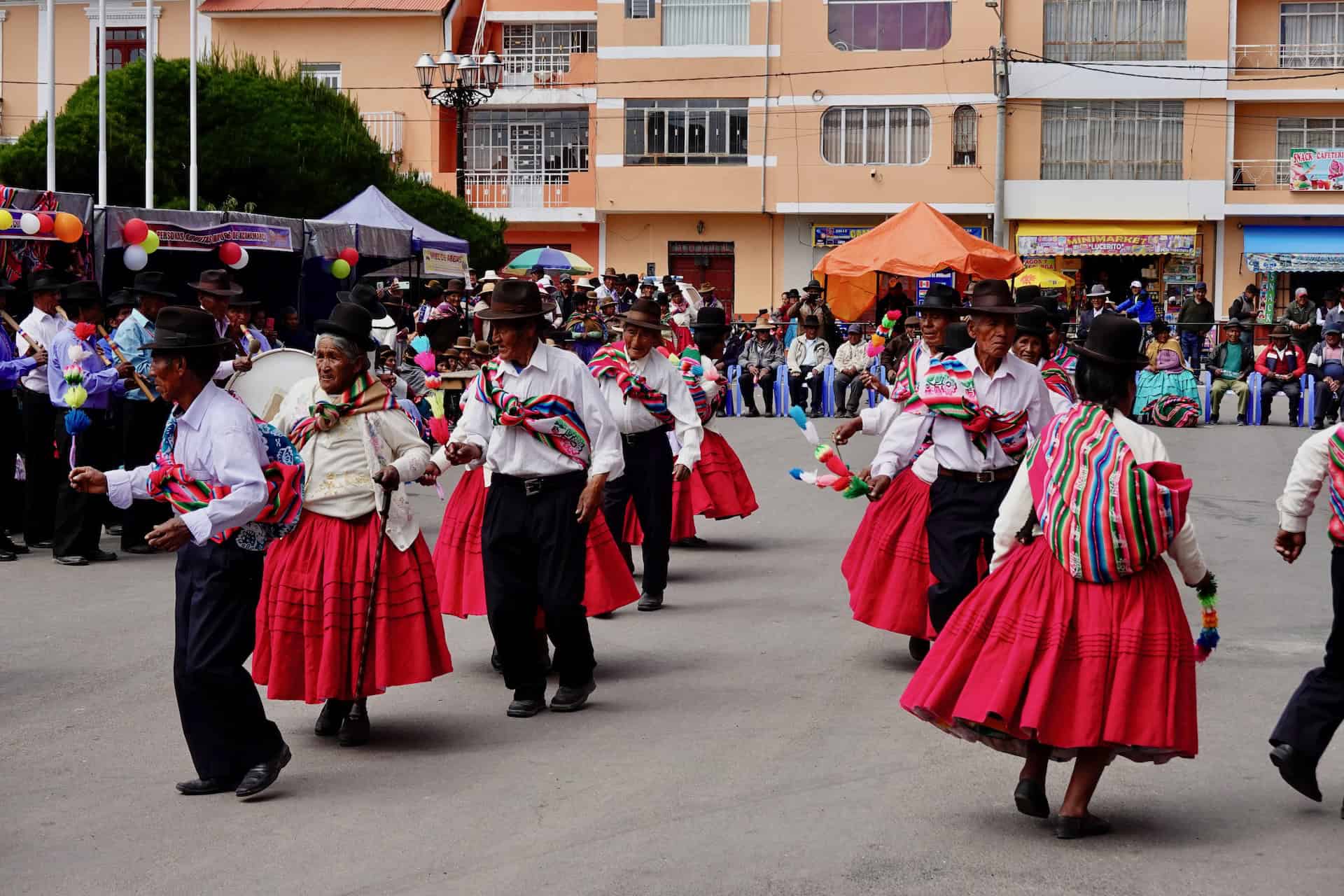
A false start in beautiful Peru
La Paz, 3625 meters above sea level and with a population of almost one million, marks our last stop in Bolivia. We are guests of a couple of cycling enthusiasts who spoil us with some delicious traditional lunches. In turn, I make an arretjescake for them. Arretjescake is always a good treat when traveling. Nobody seems to know the cakes and butter, cocoa, Maria cookies and sugar are available everywhere. This time, too, I am asked for the recipe. In this way, the arretjescake is slowly conquering the world through my travels :D.
La Paz is located in a valley, surrounded by steep, high mountain slopes. The enormous differences in height in the city are, due to a lack of wide streets, bridged by cable cars. Every corner of the city can be reached via ten different cable cars, each with its own color. It is a wonderful sight, the modern colourful gondolas of Swiss make above the mostly clay-colored houses with corrugated iron roofs. A ride from start to finish with one color costs less than € 0.50. Clearly, I want to travel around the city by cable car for an entire afternoon! Fortunately, Paul is also up for it, so that’s what happened. We share the gondolas with Bolivians on our way to school, to work or on our way home after a visit to the market. What a wonderful way to get around! This must be much cheaper to build than digging a metro network under the city.

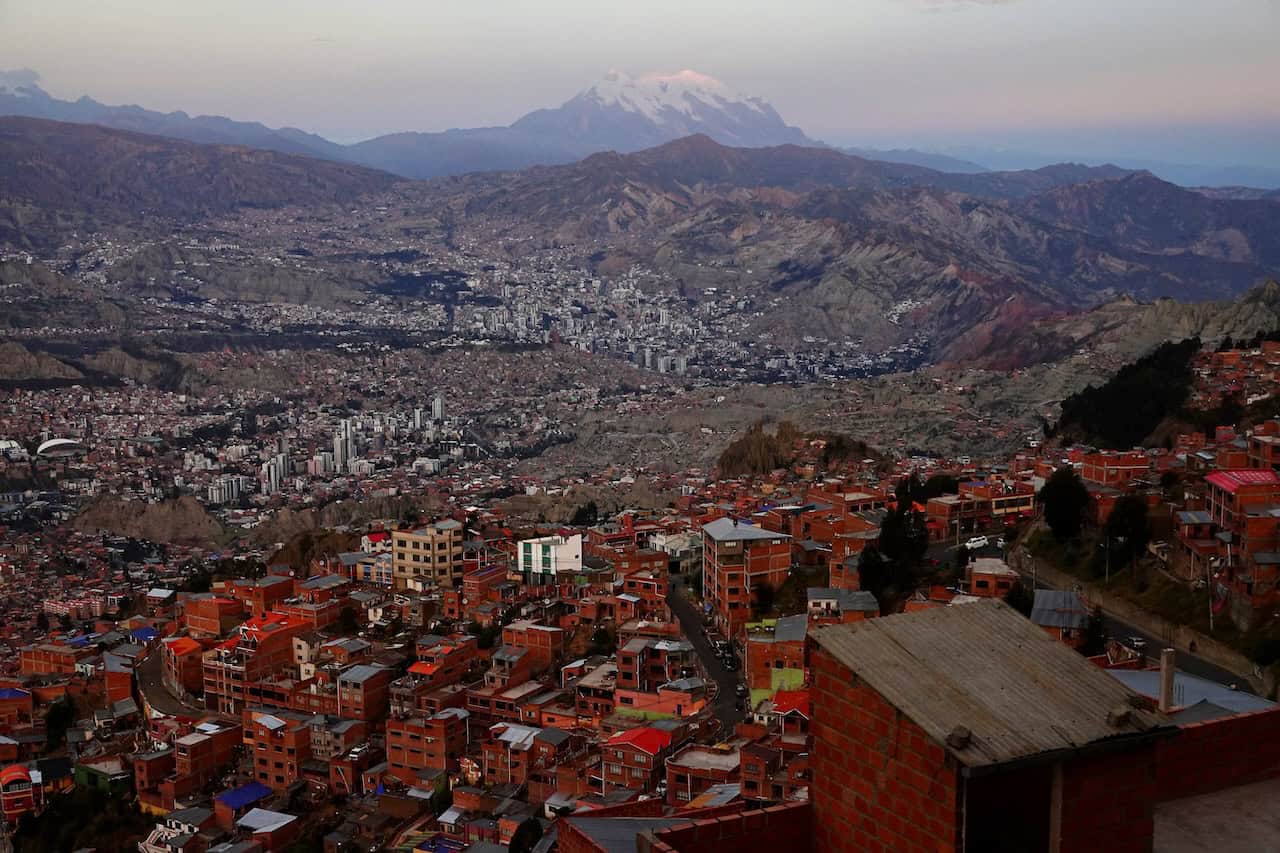

In the city we see many ladies wearing small bowler hats. The ladies are called ‘Cholitas’. ‘Chola’ was an insulting term for women of mixed descent, partly indigenous, partly Spanish. Even after the departure of the Spanish, these ladies could still count on strong discrimination. This changed in 2012 when a president of indigenous descent came to power and established rights for the indigenous population. This, together with the emerging feminism, caused a major change for the Cholitas. They now often choose to embrace their descent with pride and are beautiful appearances in the street scene. You can’t ignore it. Not least because they are very solidly built women, this is part of their status as strong, courageous and fertile women. A nice detail are the (too) small bowler hats they wear. Rumor has it that during the colonial period the Spanish sent a huge amount of bowler hats that were too small to Bolivia for the railway workers. In order not to throw them away, they were given to the indigenous ladies… Is it true? Who knows…
We also visit the ‘Valle de la Luna’ just outside the city by bus. A valley that is supposed to look like the moon. The excursion is a bit disappointing. The valley is very small and is surrounded by construction and roads. Thanks to the marked out walkways, it also feels a bit like an attraction. Let us explore for ourselves!
After a few days in La Paz, we prepare for the last part of Bolivia, the route to Lake Titicaca. Right next to La Paz is El Alto. Right next to it, but 500 meters higher. Fortunately, there is a cable car going up and the bike is allowed! So Paul and I are both lifted out of the valley in our own box with our bikes in a Swiss box. What a luxury!

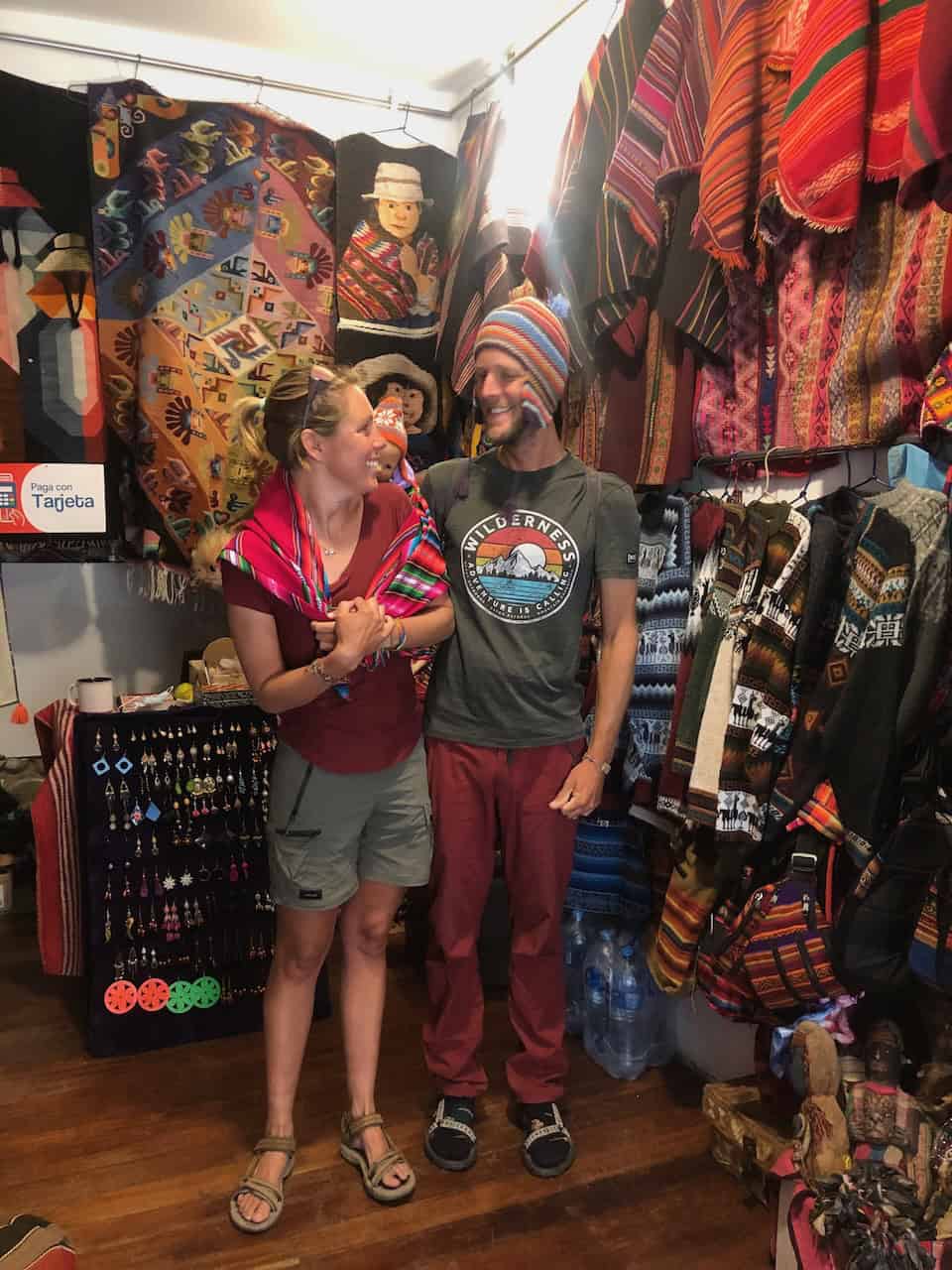
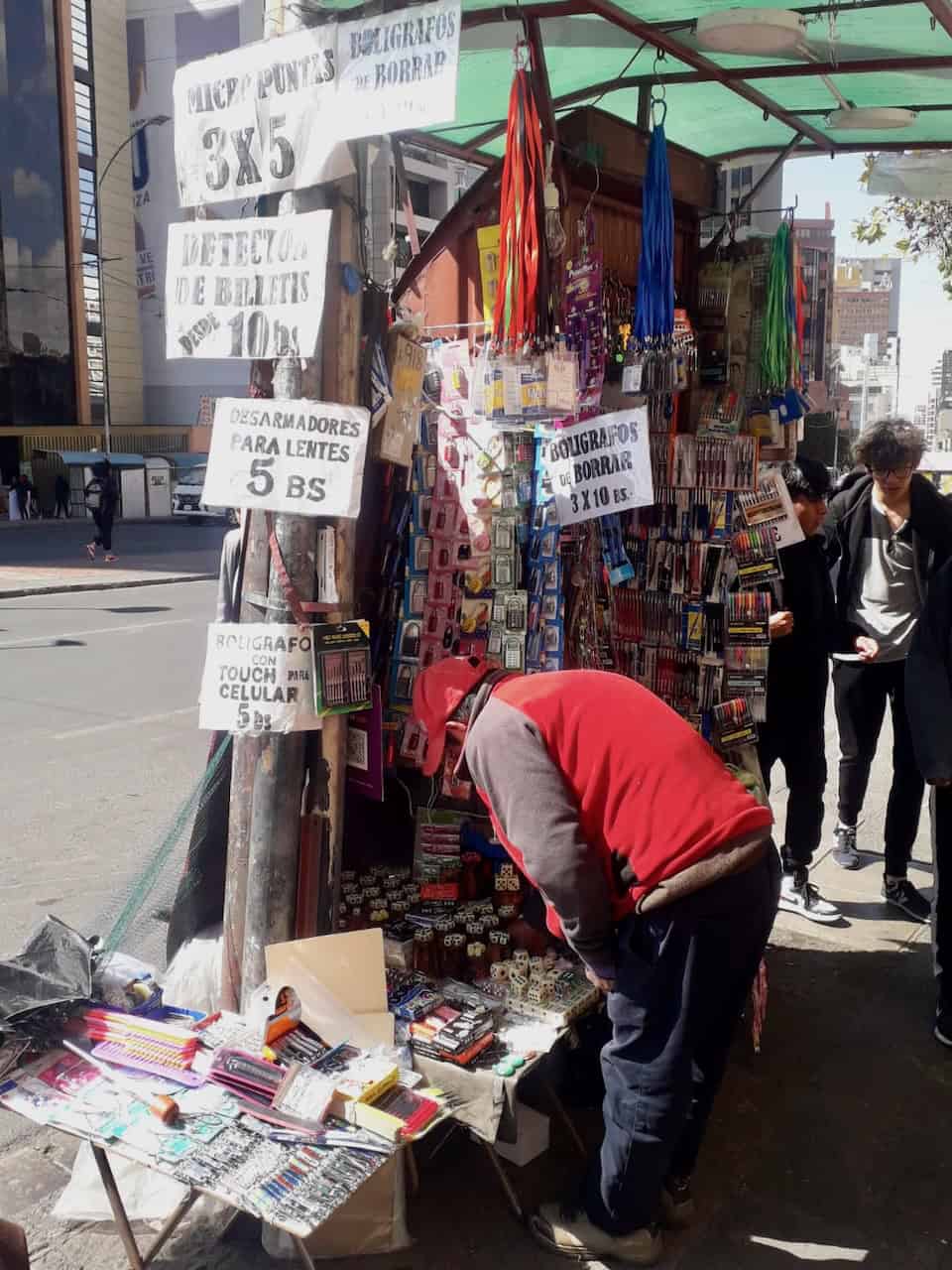

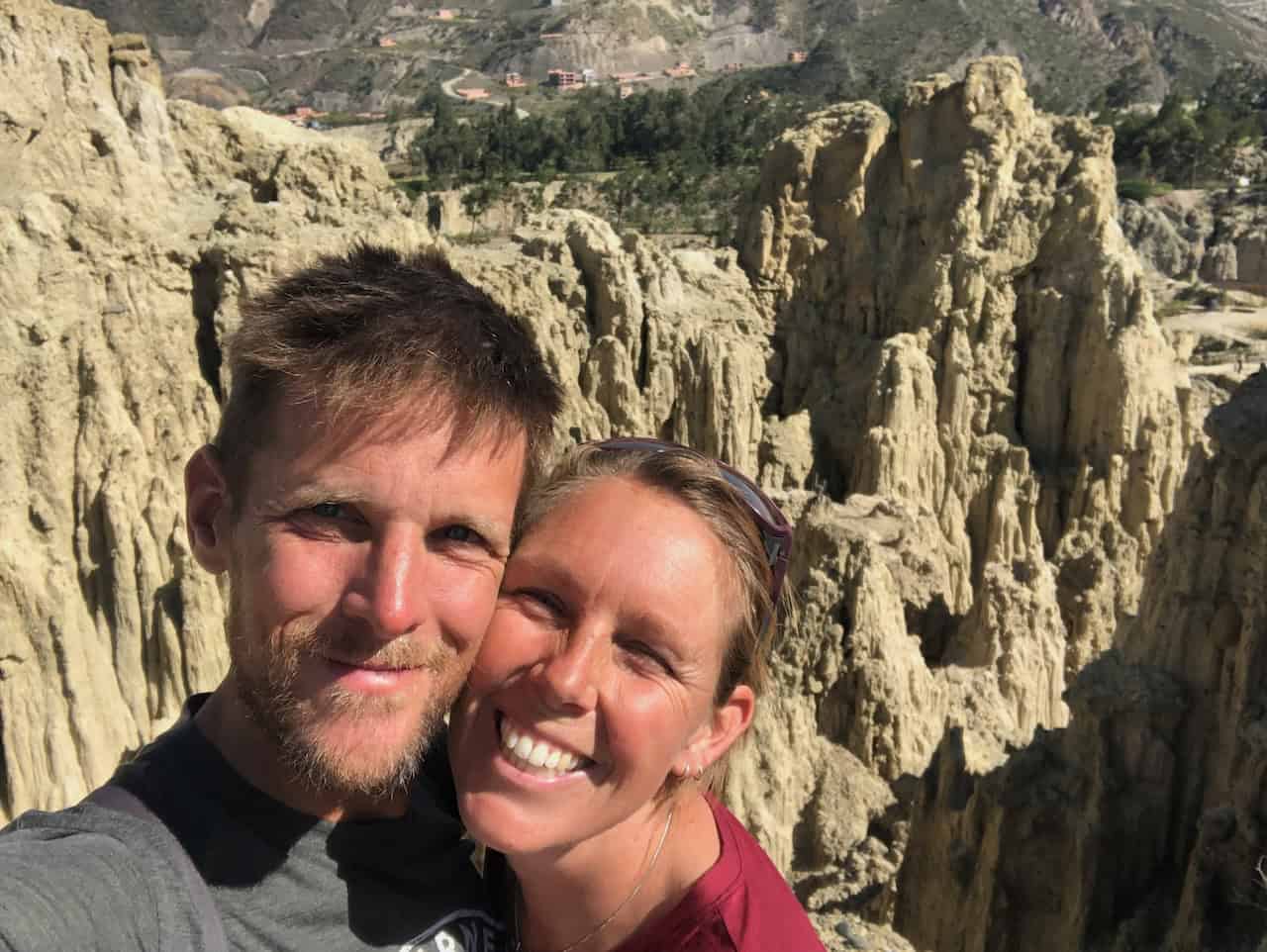
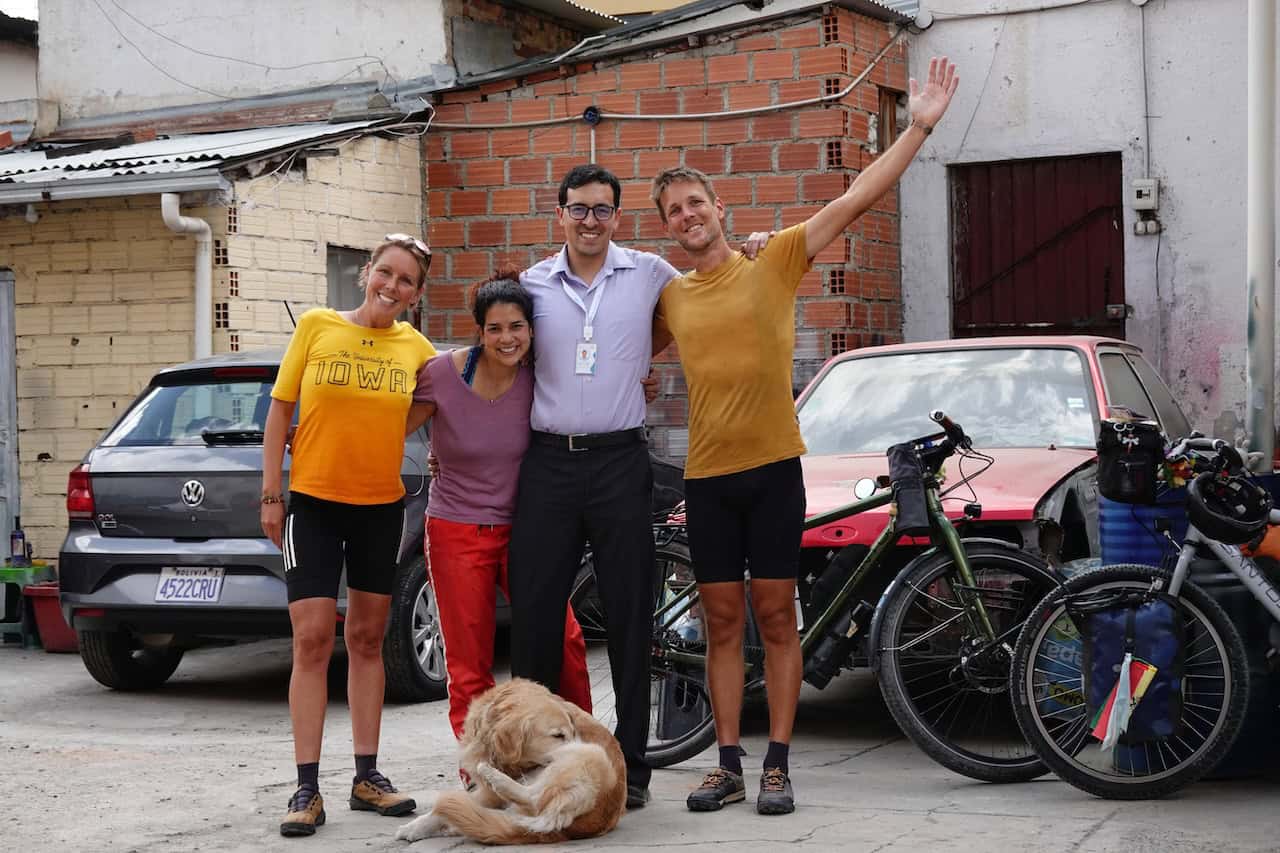
Via the touristic Copacabana and a ferry crossing of the narrowest part of Titicaca we reach the Bolivian/Peruvian border. Peru… PERU! We made it. The country I have been looking forward to the most since we planned this trip. The country I was so afraid I might not make it because my knees would give out sooner. The country we saved for last because the difficulty of the route and the absurd number of altitude meters made it unsuitable for the start of the trip. We are there and we still have more than 3 months to go before we want to fly to the Netherlands. We have already fantasized about our cycling plans in Peru in the Netherlands. Various routes have been mapped out by others that largely go over unpaved paths and through impressive mountain ranges. I am as happy as a child that this adventure is finally in front of our wheels!
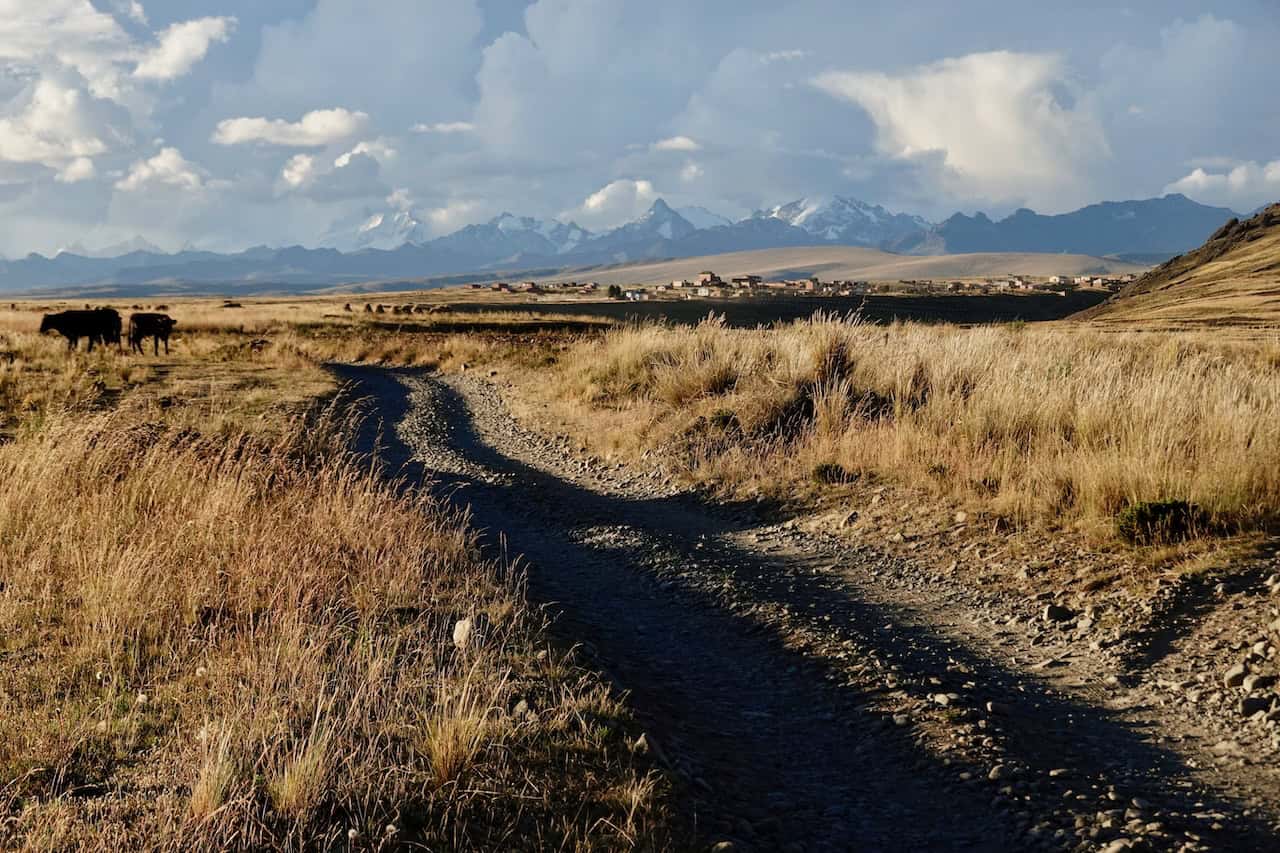
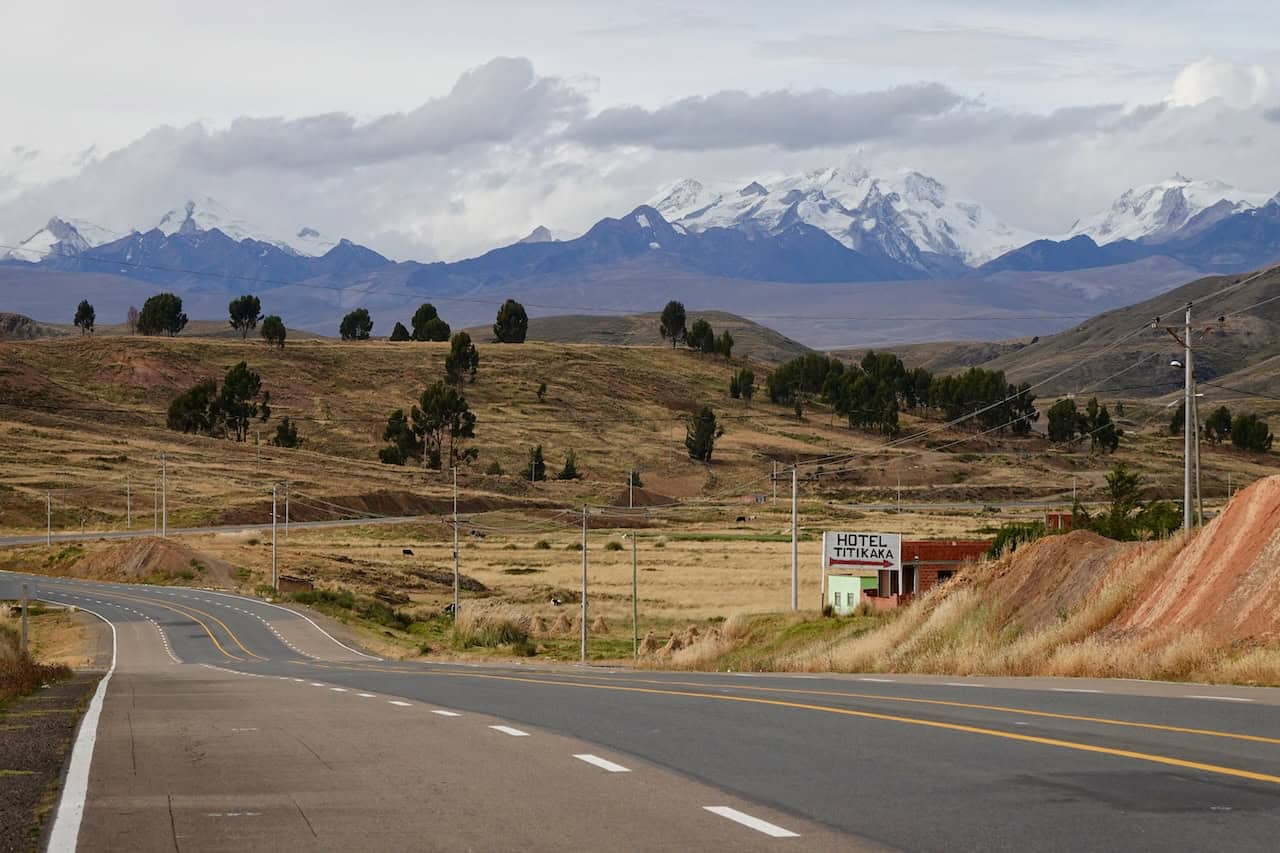
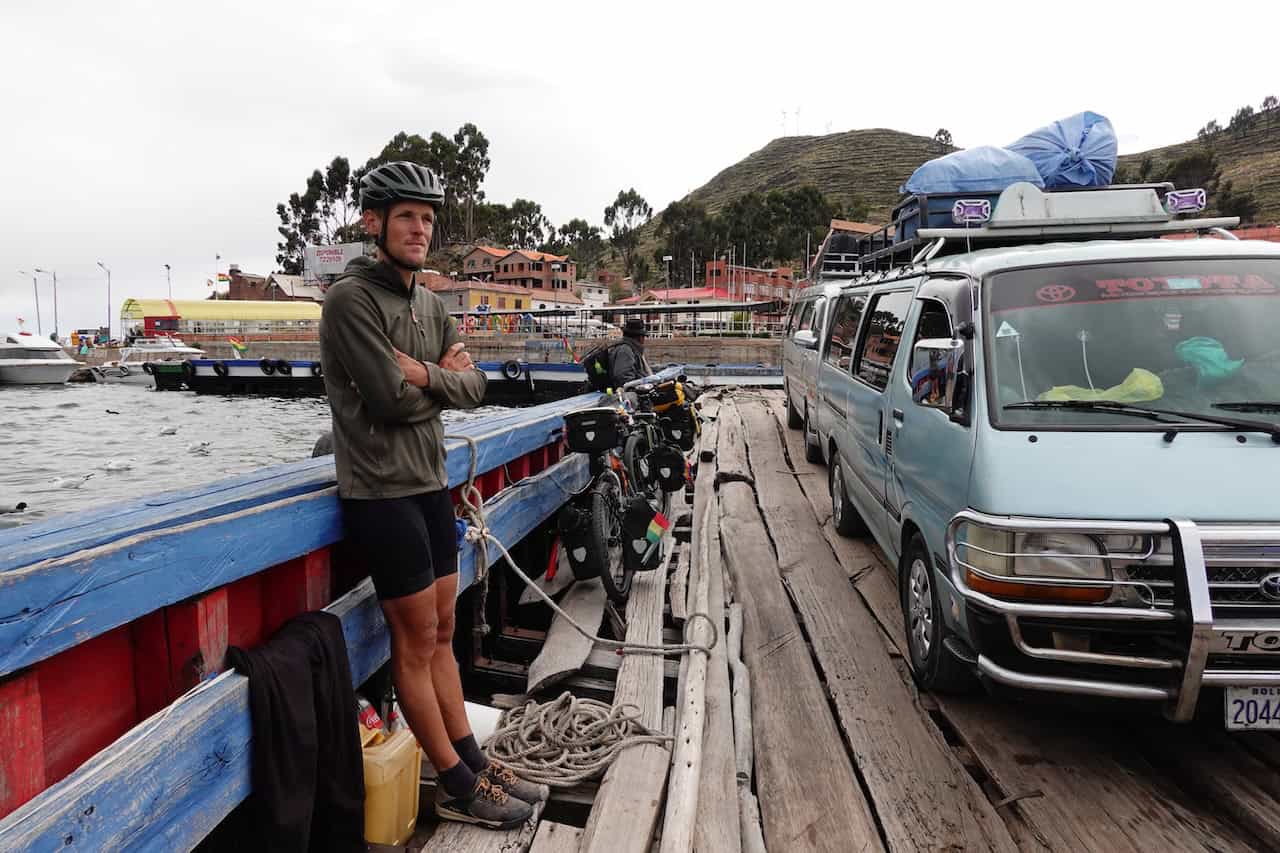

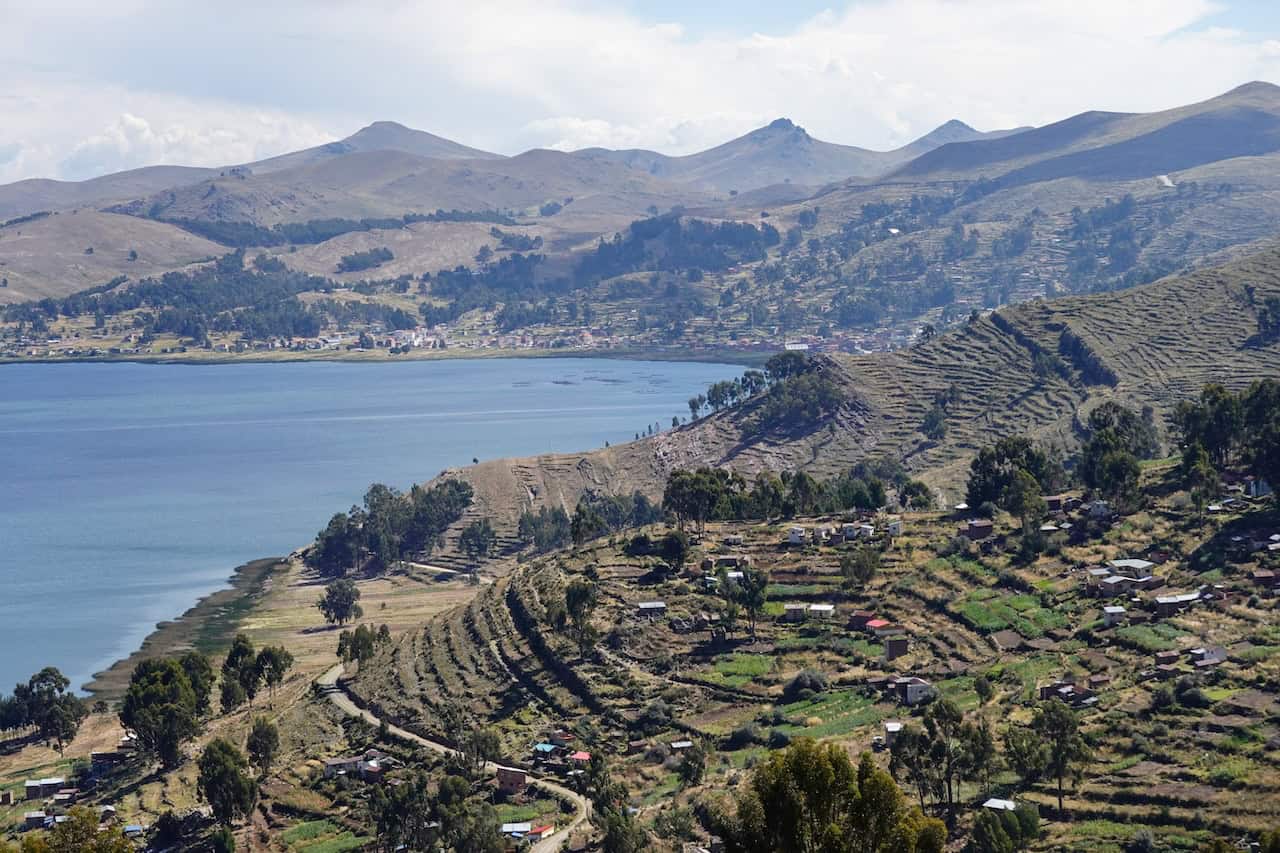
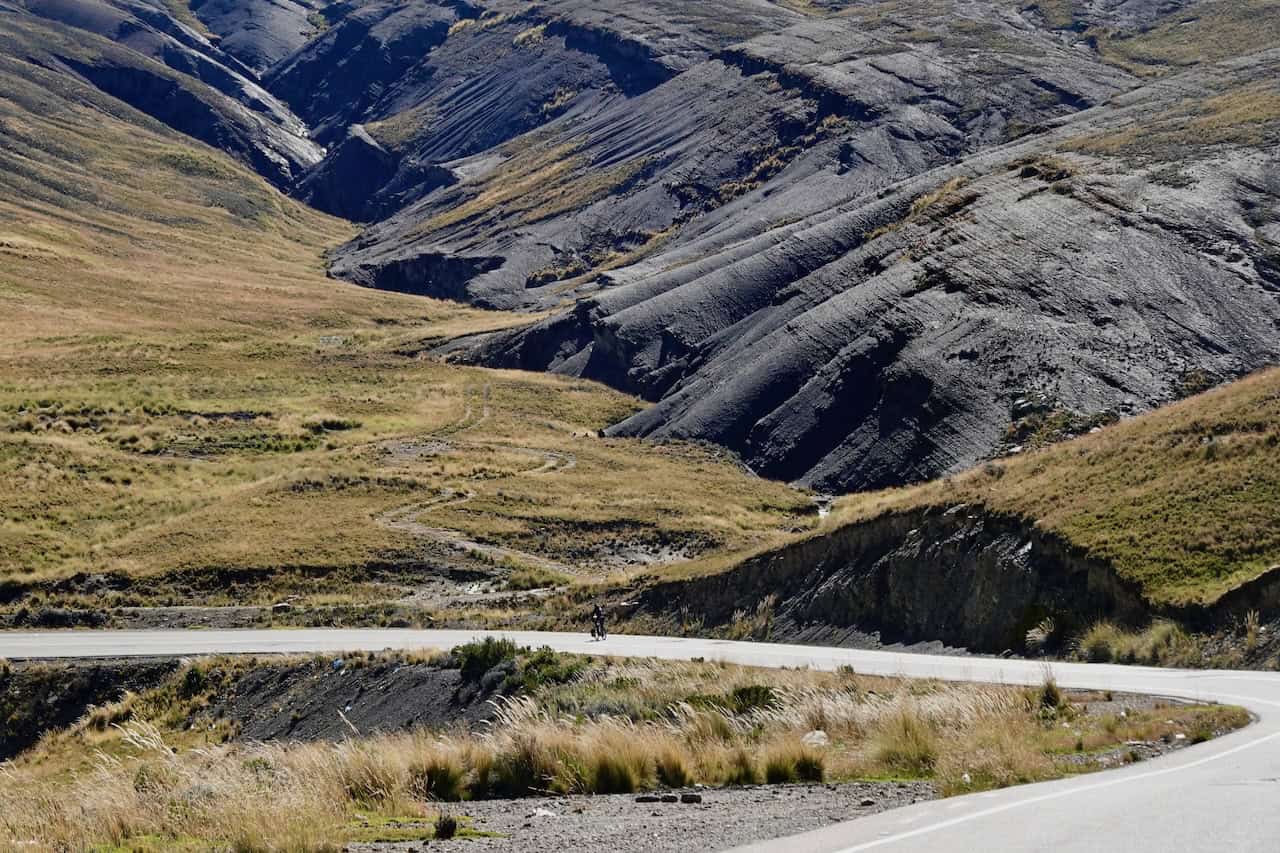
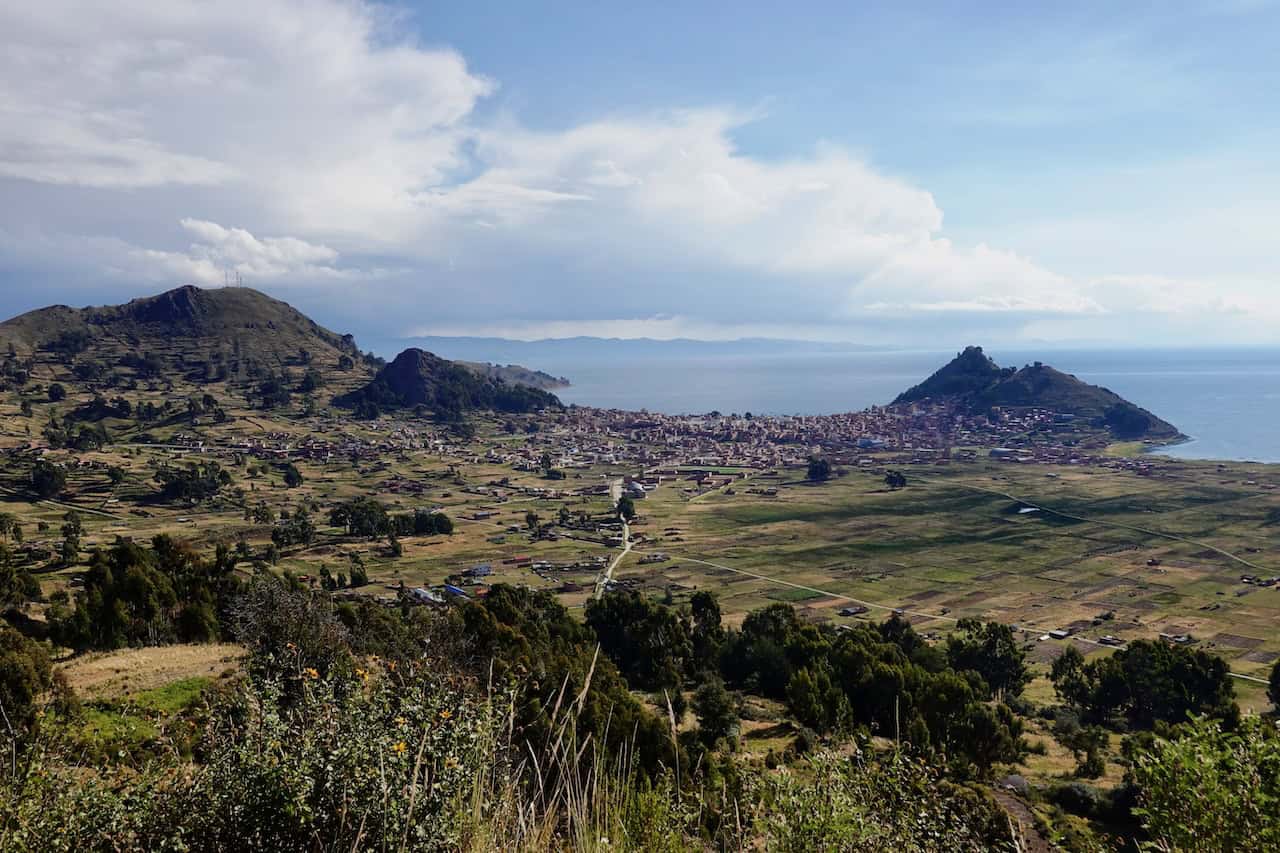
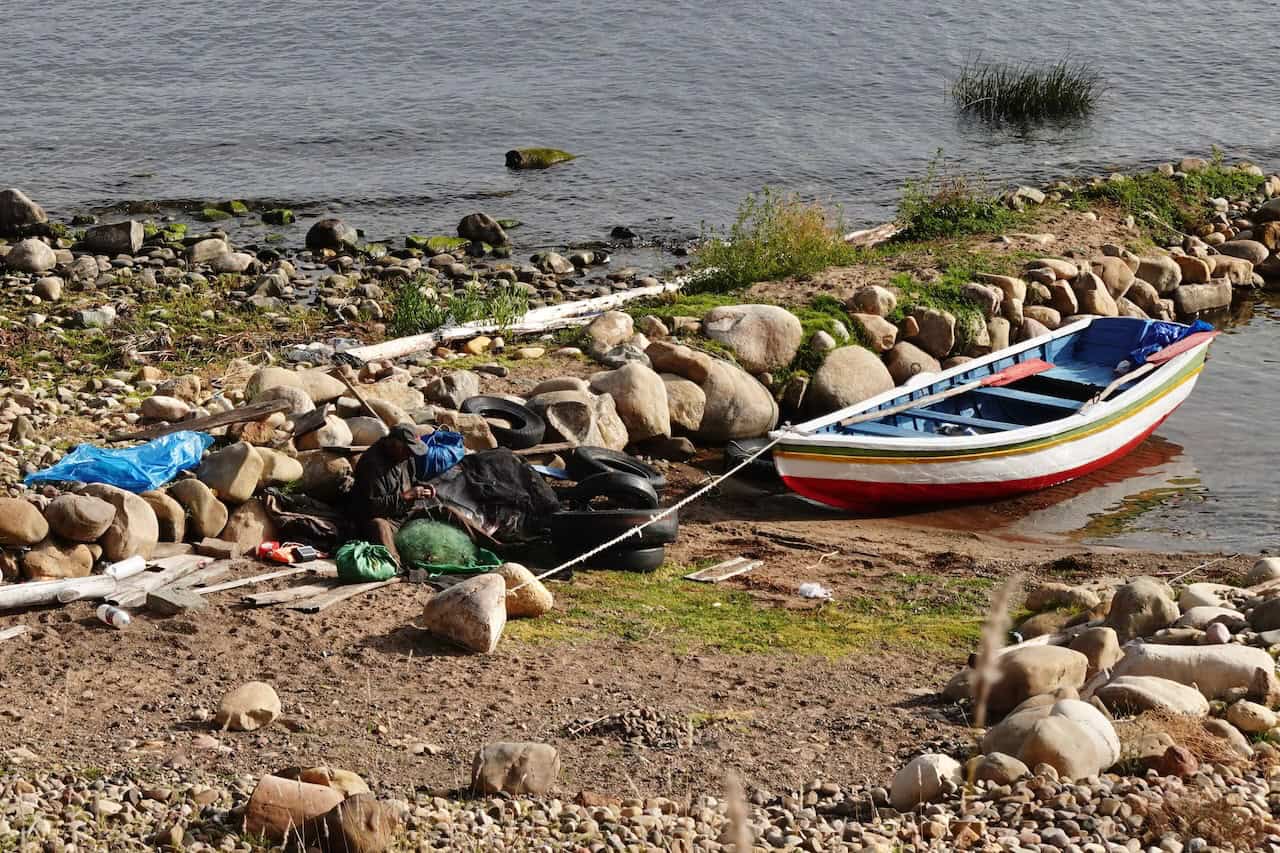
Once over the border we stop in the first village for a cup of coffee and some groceries. We are in luck, because that afternoon there appears to be a market and dance performance by the ‘mayores’ (elderly people) from the village. The audience also consists largely of elderly people and in addition to the market and performances we, as the only foreigners, also appear to be a sight to behold. When the first performance finally begins, (very) old men wave (very) old women around. It is unmistakable that the steps, the twirling and waving, the enthusiasm with it, have been ingrained in them since childhood. Halfway through the dance they unload the colored cloths from their backs and sprinkle and decorate each other with the confetti and streamers that were hidden in them. What a pleasure to watch! A second dance follows, less impressive but very funny, in which the dancers are dressed in crazy costumes and with masks that vary from traditional to characters from American horror films (Chucky). It is a pleasure to see how the elderly perform their show with great dedication while the audience watches with endless patience and enthusiasm.
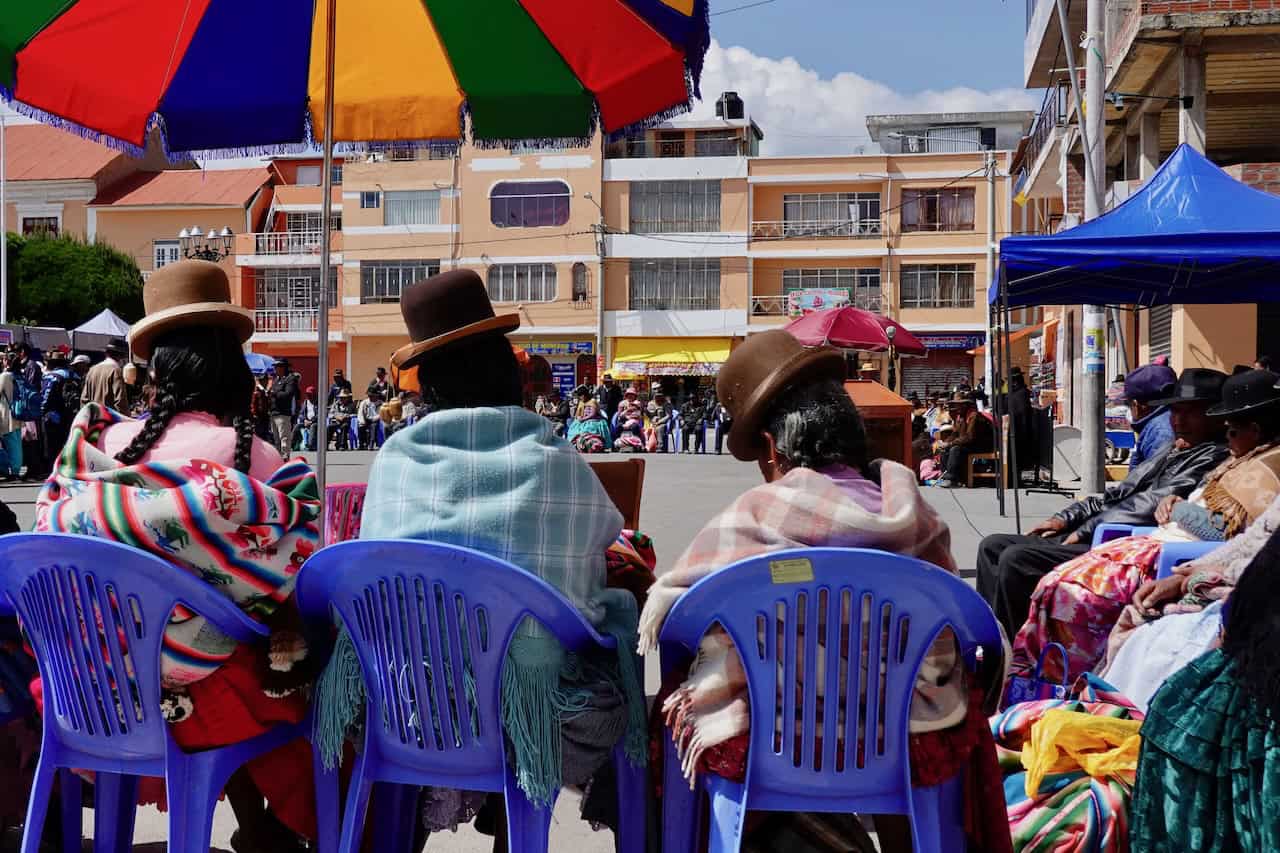


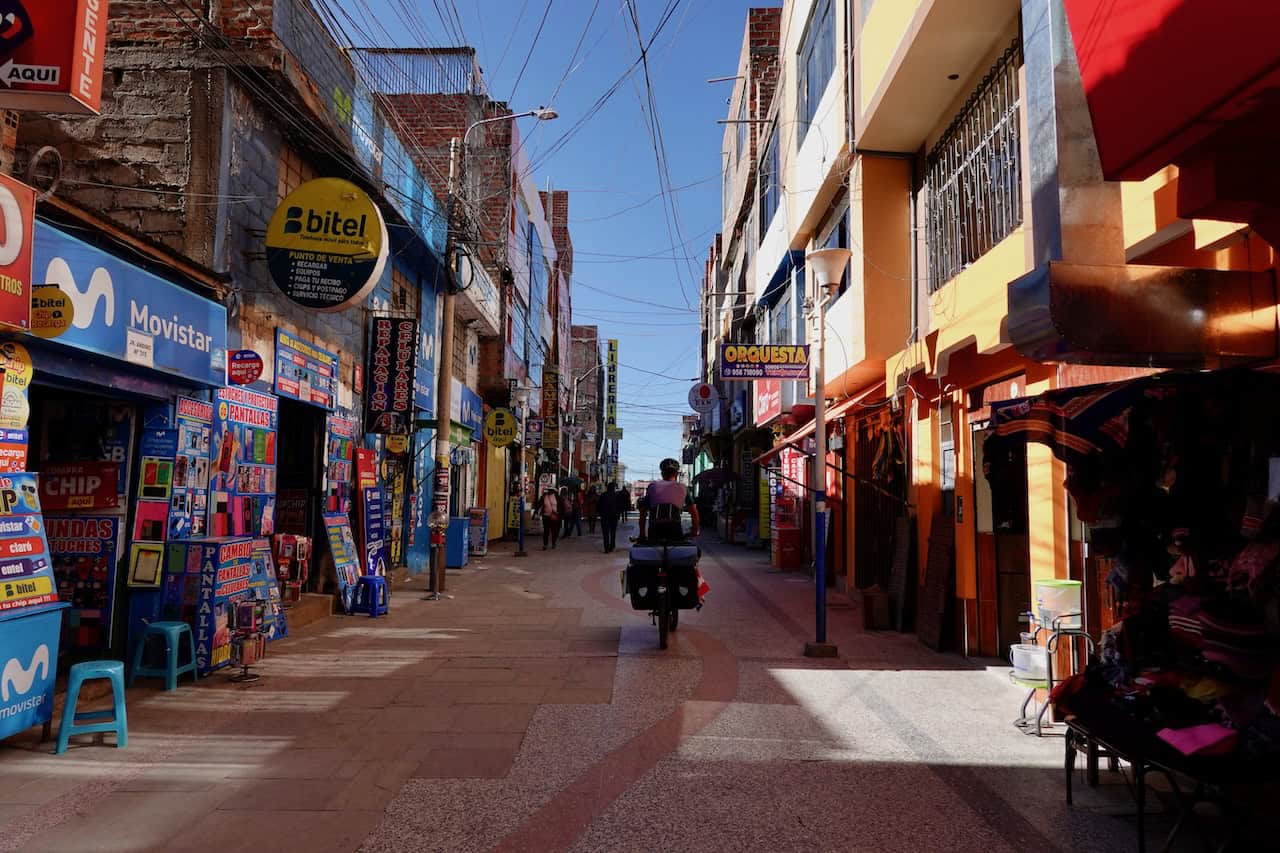
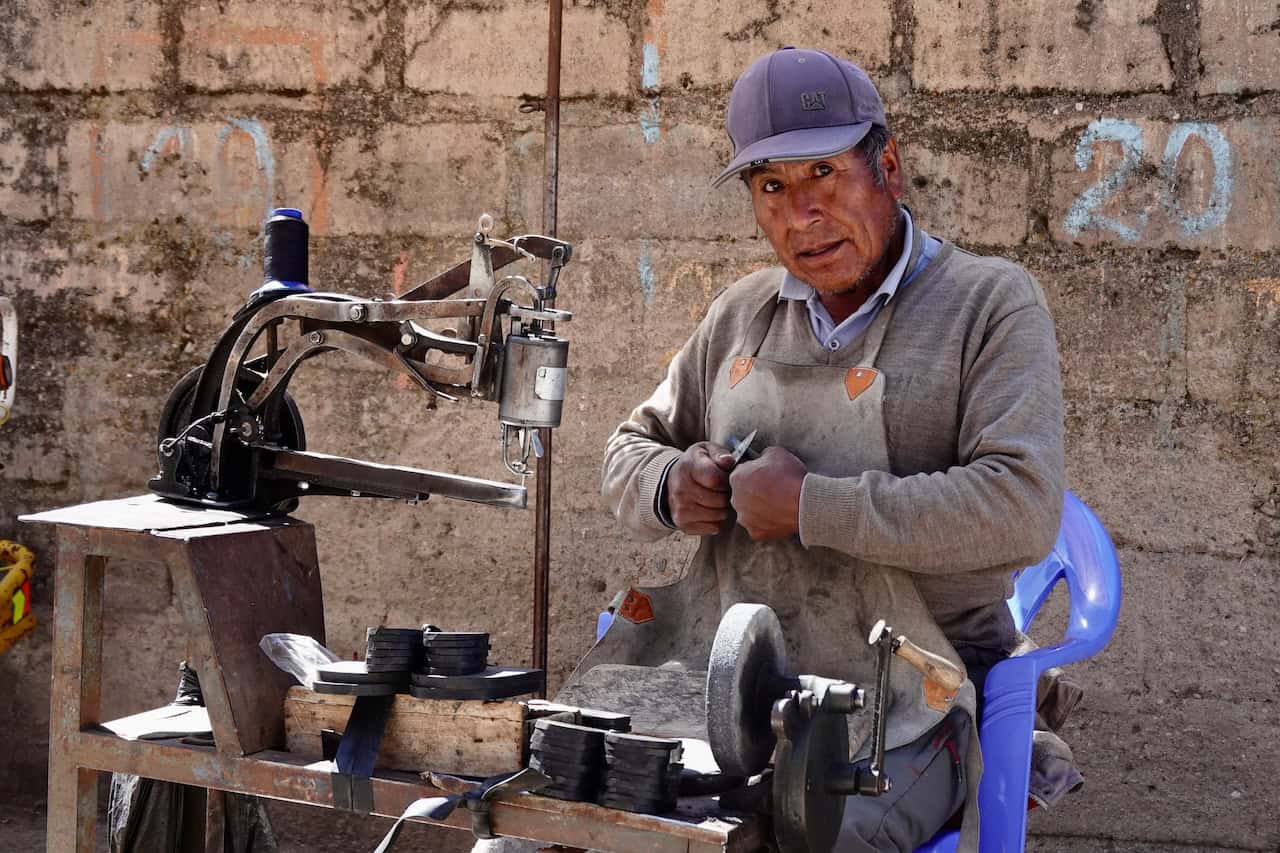
After the second dance, Paul and I get back on our bikes. We want to ride a bit more and then camp at Lake Titicaca. Paul is not making much progress today, I have to hold back to let him come back to me. Bad legs? You get that sometimes. ‘How far do you want to go?’ he asks somewhat plaintively from behind me. Who knows… I think, we’ll decide that together, right? Paul is clearly feeling weak and we decide to look for a camping spot as soon as we reach the lake. Dark approaching skies are a motivation to keep up the speed. But that speed is nowhere to be found… We won’t make it to the beach, so we ride along a path in the fields. While the clouds cover the sun, we choose between three less than ideal camping spots. The moment I spread out the groundsheet on a spot next to the path, it starts to drizzle. Paul is feeling pretty bad by now and I can smell that he is really annoyed by this situation. Within half a minute, a cloudburst occurs from which large sharp hailstones rush down with force. They land painfully hard on my body, dressed in a t-shirt and cycling shorts. Like idiots I put up the tent and throw all the sleeping gear inside. Luckily it is not soaking wet inside. I blow up the mats and roll out the sleeping bags while Paul sits next to me shivering violently. Once he is under his sleeping bag, with all his clothes on, the shivering does not stop. He breathes as if he is fleeing from a snow leopard on Mount Everest and his forehead soon feels sweltering hot while he lies shivering from the cold under two sleeping bags. This is not good! Poor boy. His stomach is starting to hurt quite a bit and his intestines are rumbling like a chemical lab. It is precisely the terribly smelly farts that reassure me a little… this has to do with eating the wrong food or something, so that his whole body is upset by it. Eventually I get some sleep. For Paul, however, it is a disastrous night. In the morning there are a number of fresh ‘cow’ pats around the tent and Paul has had the necessary fever dreams. I pack everything up to drive to a village 2km away where we can take a room in a hostel. Once we arrive in the village, the hostels appear to be full or closed. Paul hangs his head, he feels awful. The next (larger) village is 20km away, an impossible distance for him now. Eventually I convince him to take a diarrhea inhibitor, load our bikes into a much too small taxi and drive to Juli anyway. To my great relief I find a clean, new and affordable hostel there. After a long hot shower, Paul crawls under the covers and sleeps for a few hours straight. No matter how the next few days go, we are at least under the roof.
A few days pass in which Paul starts to feel better, little by little, to a certain extent. The stomach aches remain, the diarrhea remains, but the desire to travel further appears to be greater than the discomfort. So we continue our journey along the lake. A beautiful ride where we deviate from the main road and ride on a beautiful sandy road between small villages. But towards the end of the second day, the cycling takes its toll and we look for a hostel in the city of Puno again. Fortunately, another good choice, with even heating in the room (at night it gets quite cold at 3800m altitude) and a TV on which we can watch movies via Amazon Prime. While Paul tries to entertain himself with the internet, I explore the town. Every afternoon we go out together to have lunch somewhere.
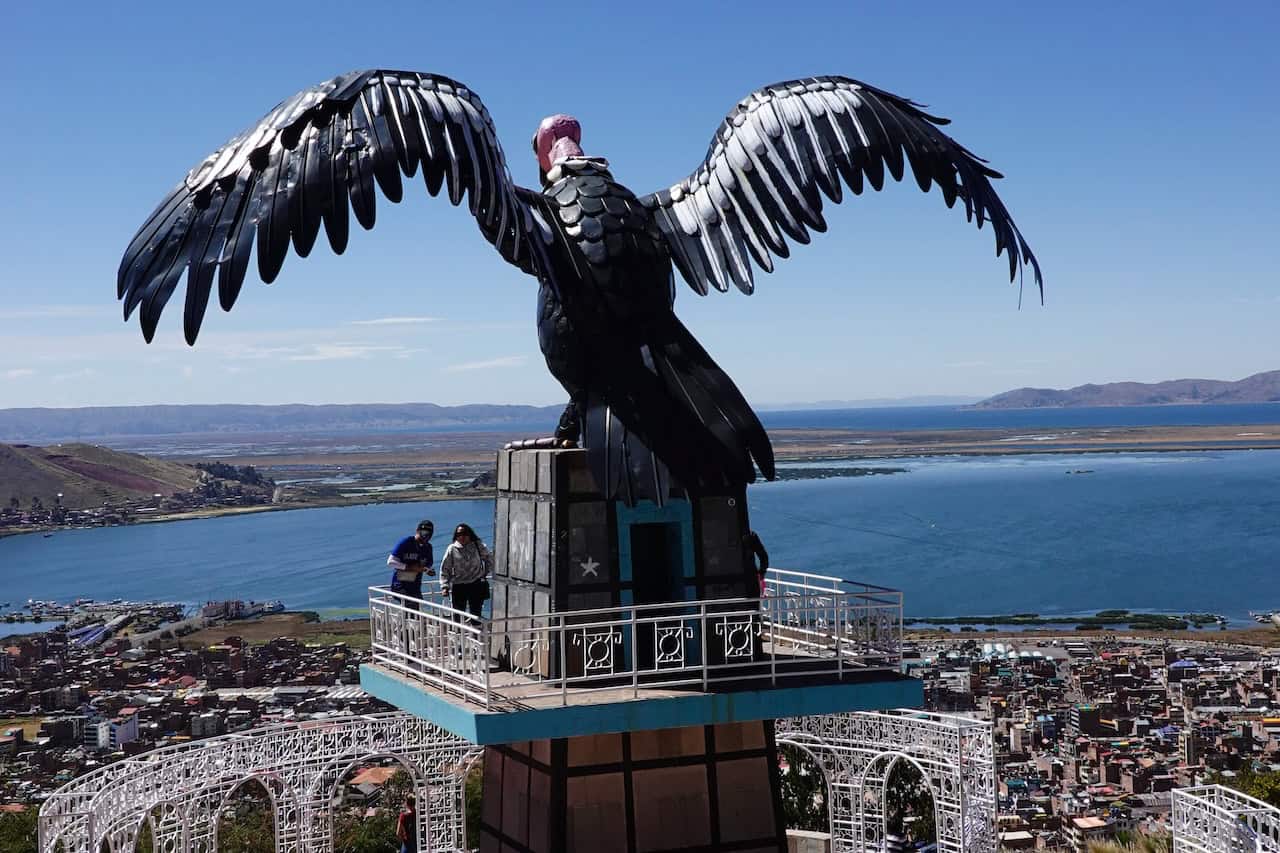
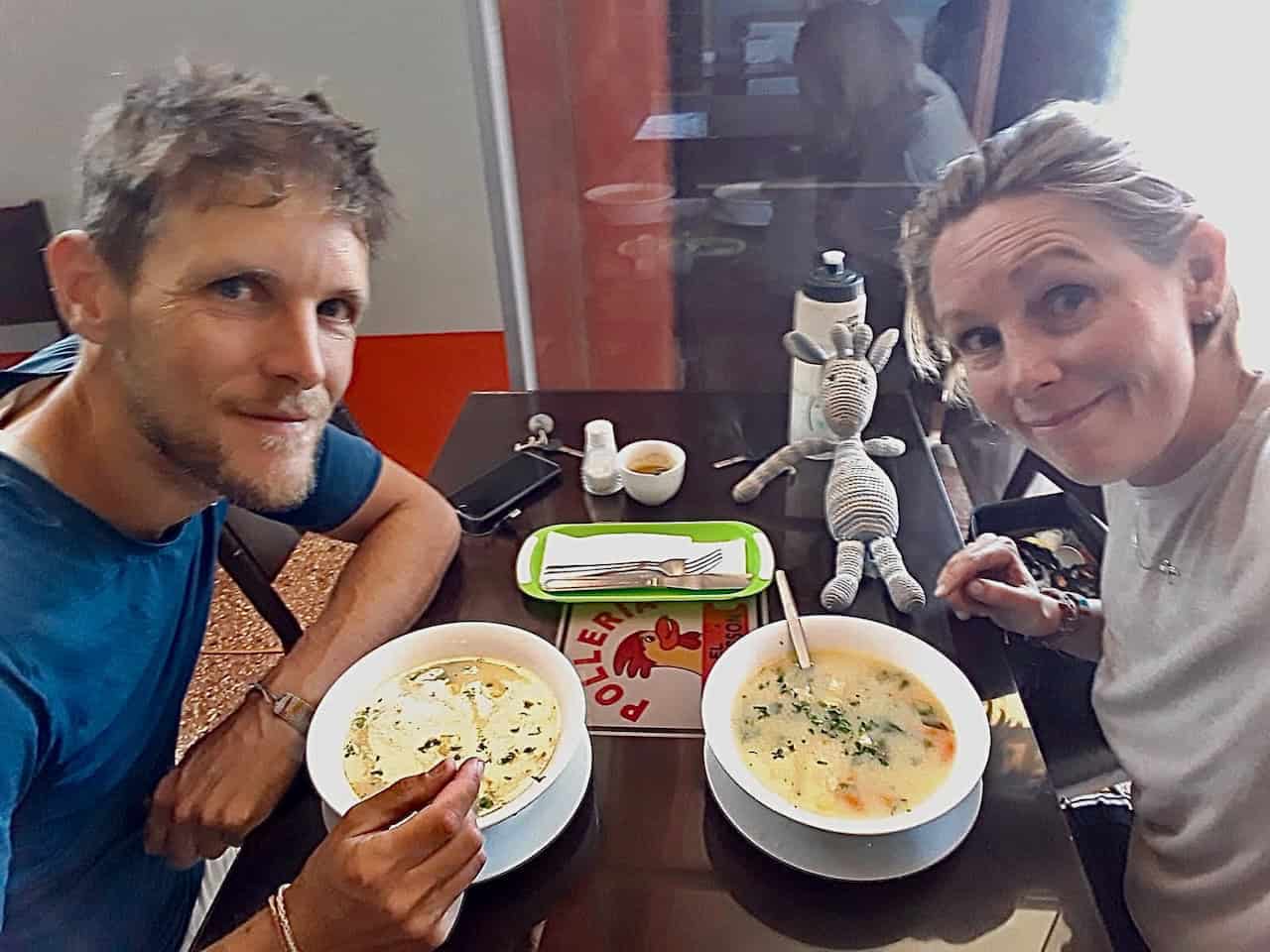
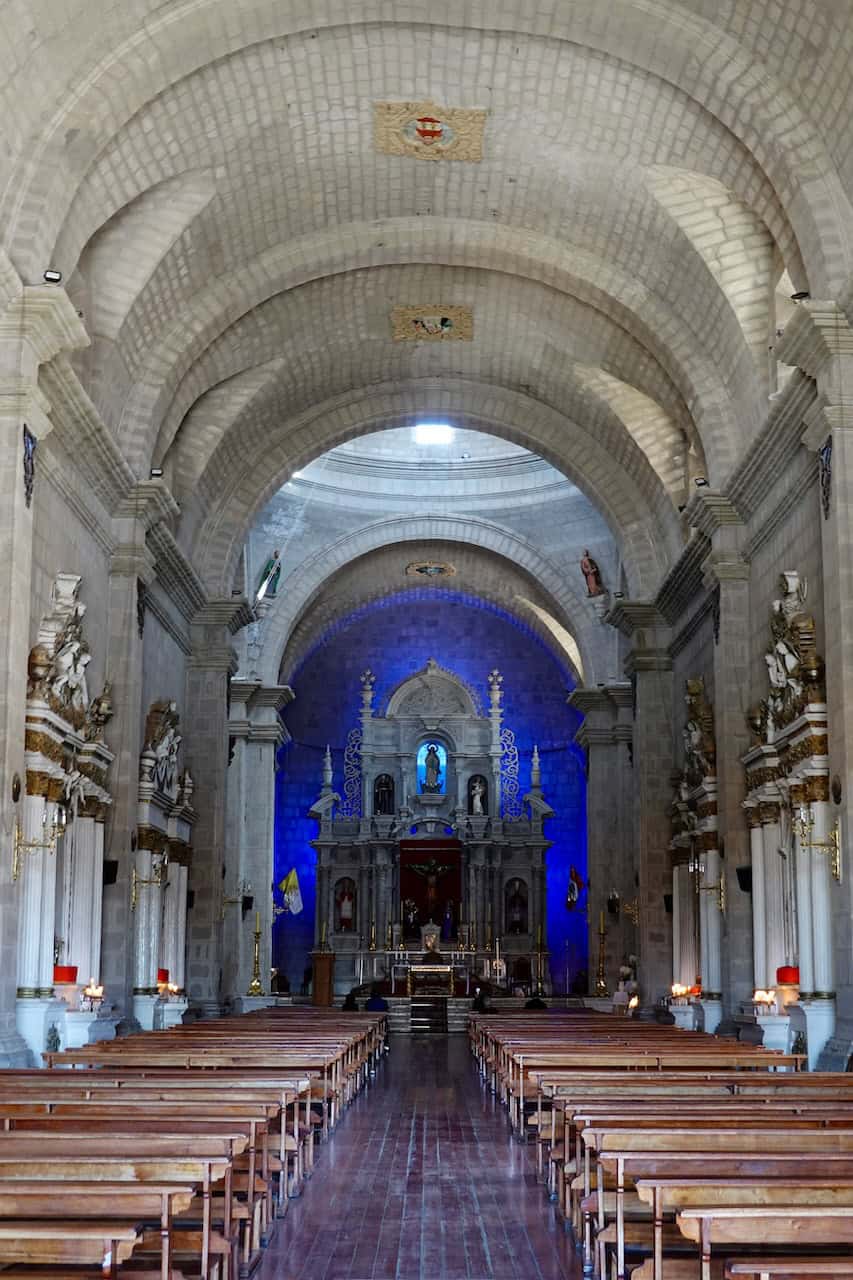
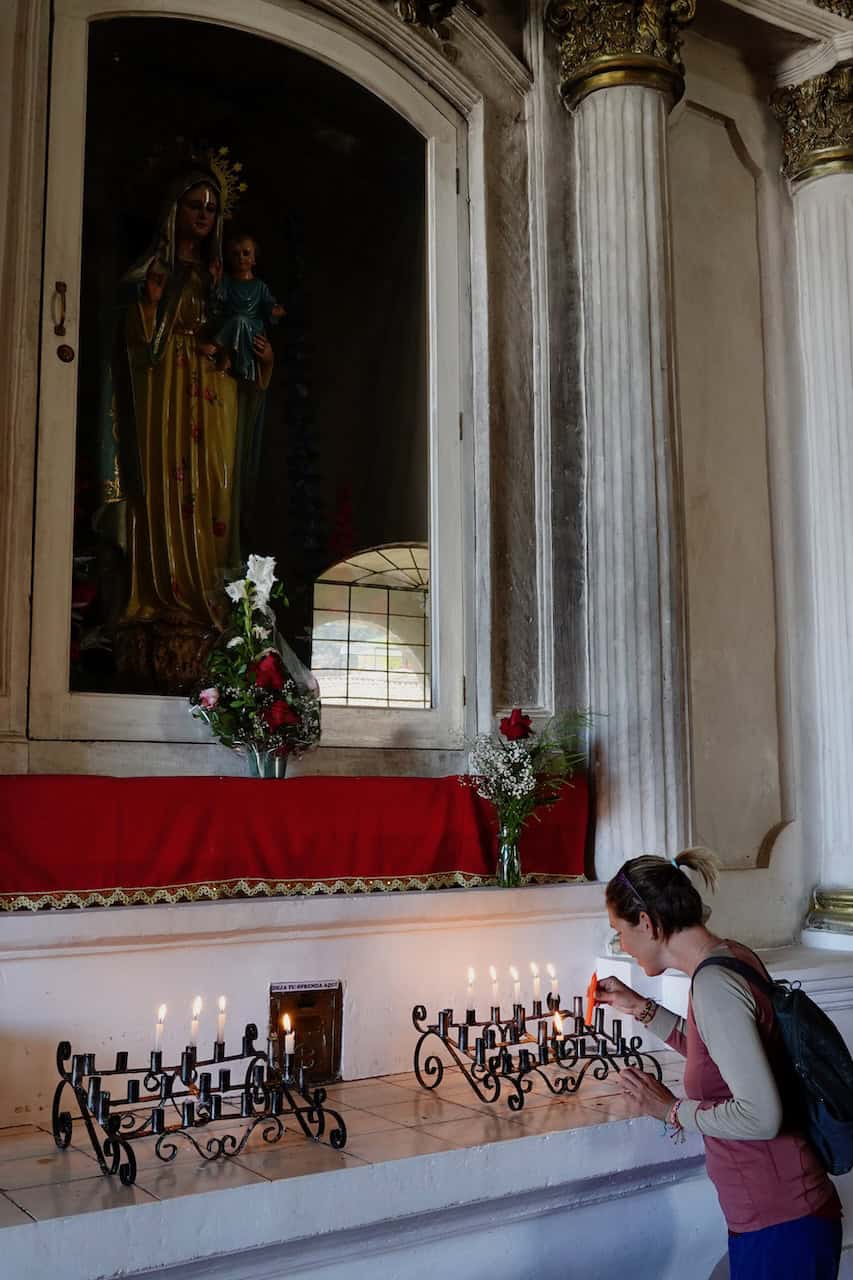
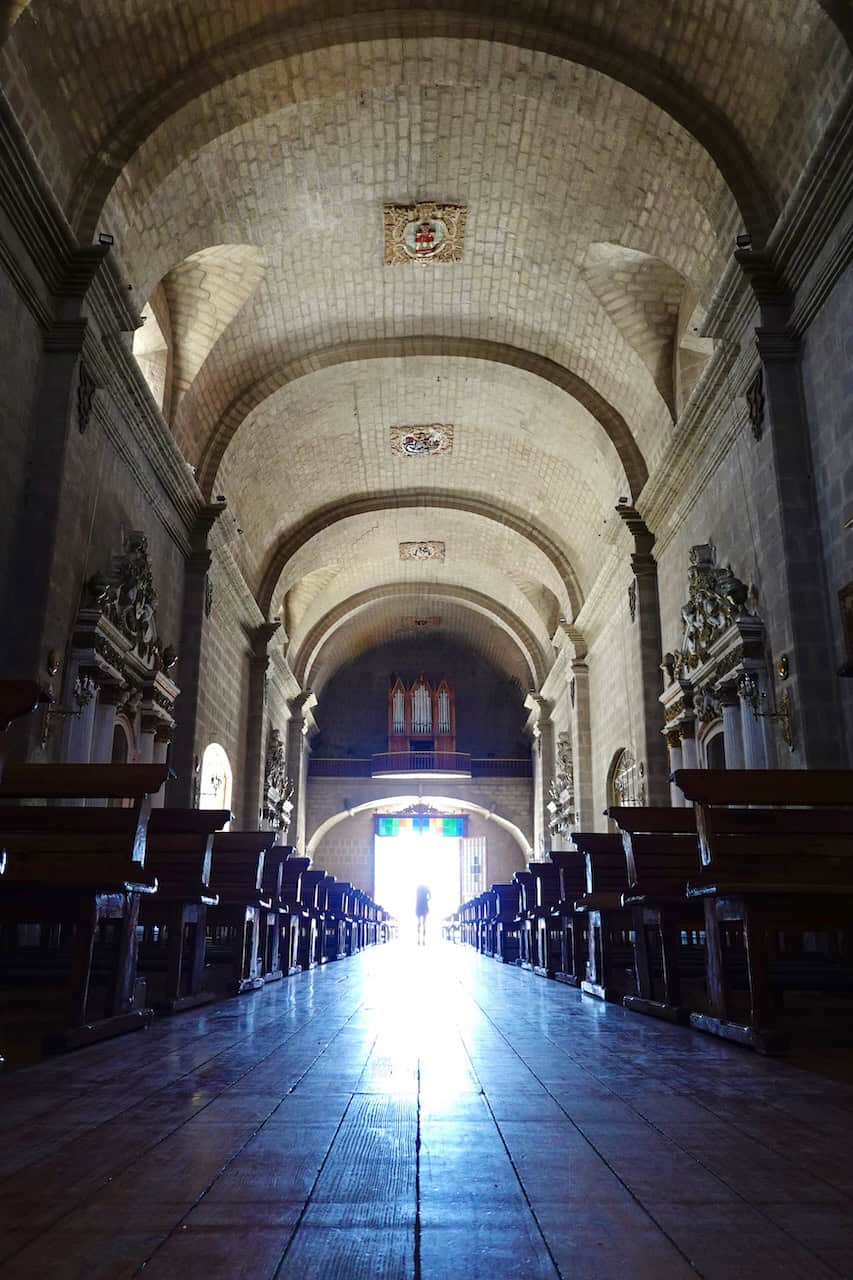
Tired of the markets, I occasionally sit down on a square or the steps in front of the large cathedral and watch the lives of the people in Puno. Parents buying bags of corn for their children to feed the pigeons on the square. Women sitting behind their stalls with sweets with seemingly endless patience. Young couples scrolling together on their phones and showing each other things. In Bolivia we regularly saw tuktuks driving around, but the place they occupy in the Peruvian streetscape is unprecedented. The carts tear around everywhere in the city. Some ‘old-fashioned’ with colorful plastic flaps and a luggage rack on the back, some new, with an appearance as if they have just been unscrewed from a fairground attraction. I also discover that Peru would not be Peru if a brass band, pan flute corps or other musical group did not emerge from a street several times a day. The public domain of the streets and squares is a sanctuary for this. So it happened that while I was listening to a high school brass band, a funeral procession with three musicians with an amplifier passed through the same square. They were blown away by all the brass of the brass band. A little later it was the turn of the young violinist. Just as she started her solo, a procession of (other) students came around the corner, another brass band, a cheering dance group and finally a flute corps. The violinist’s amplifier was turned up to 100, which mainly resulted in one big cacophony. I felt sorry for the violinist, remembering all too well how I felt when I had to sing a solo in the past but was talked over loudly by the ‘audience’ at the back of the hall. So vulnerable.
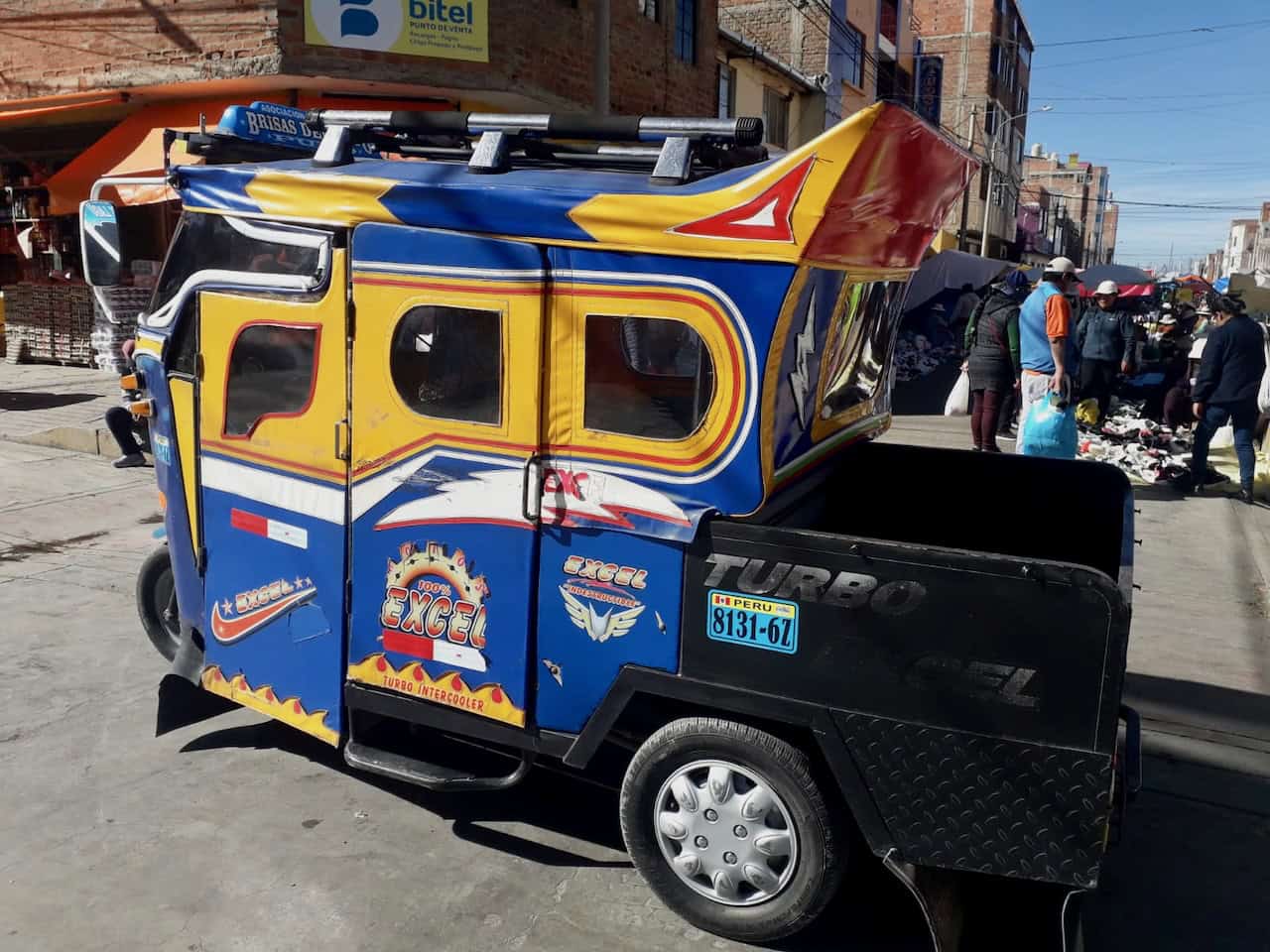
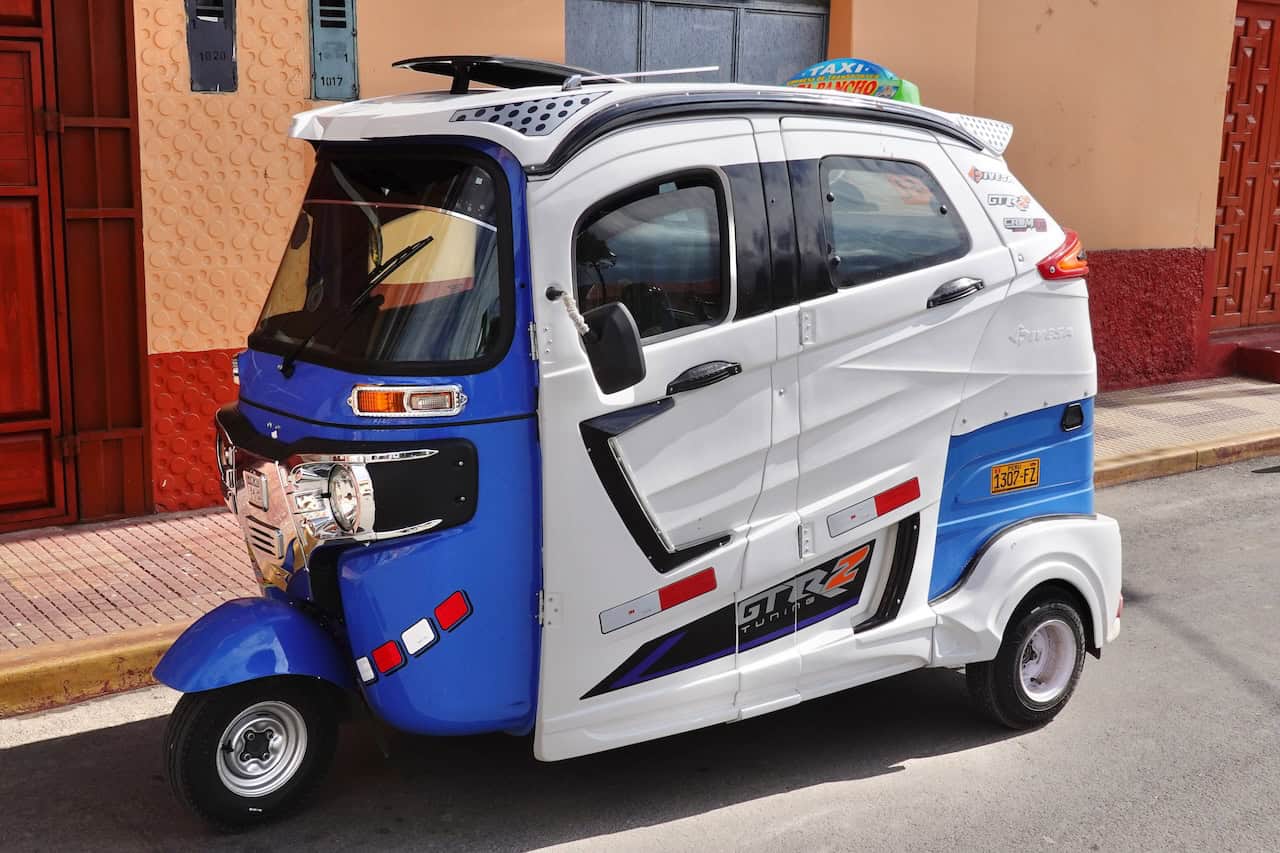
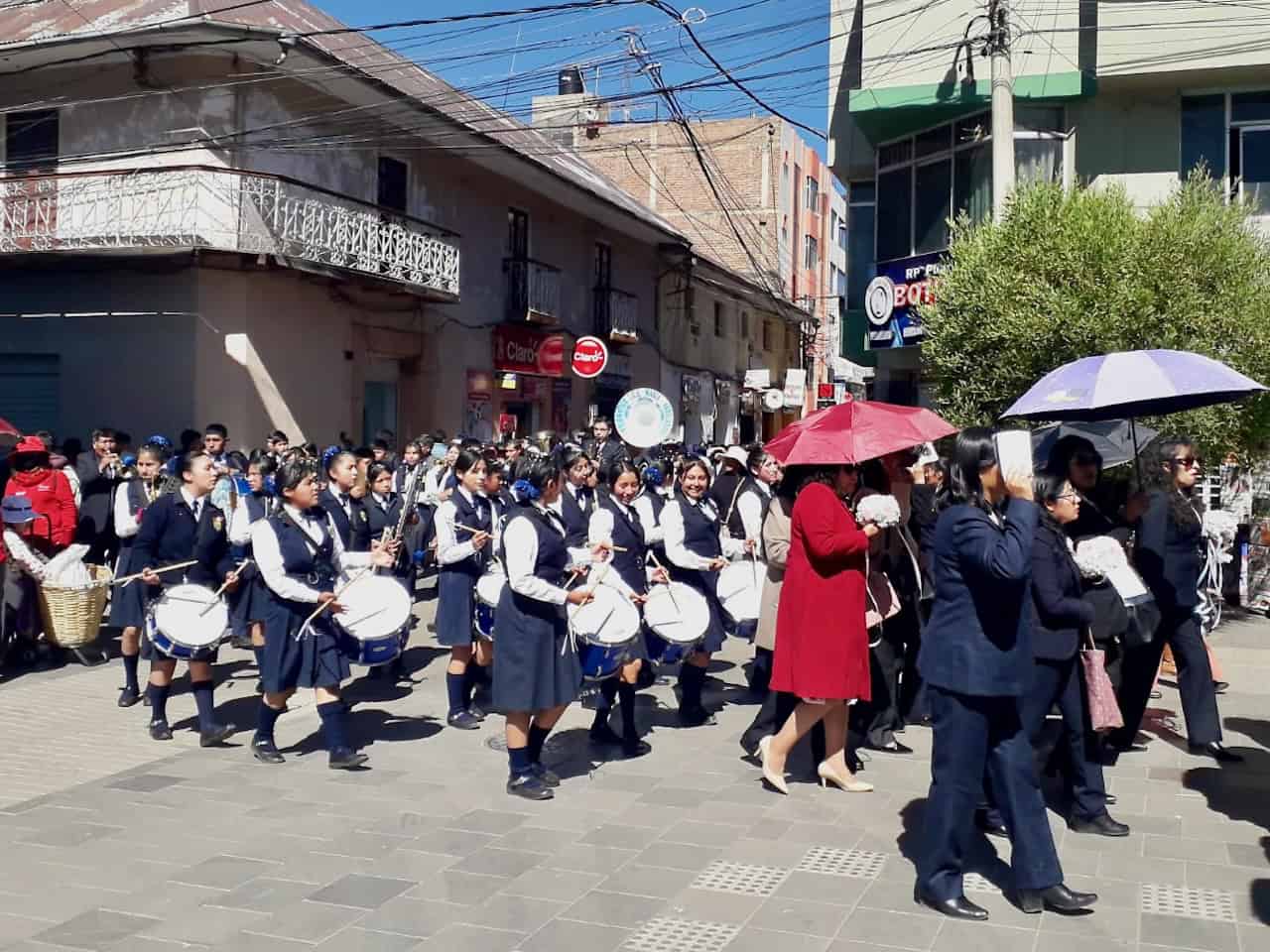
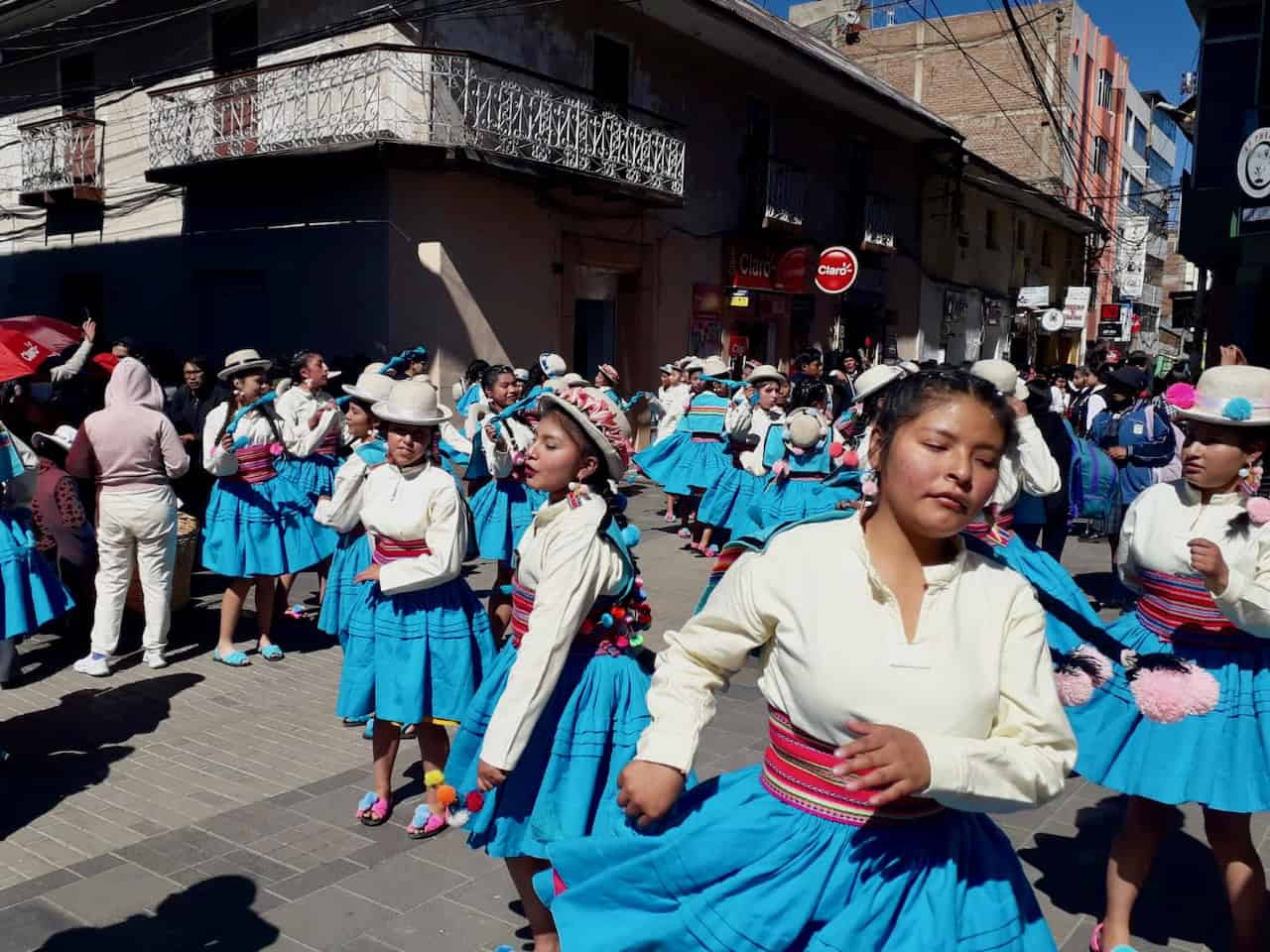
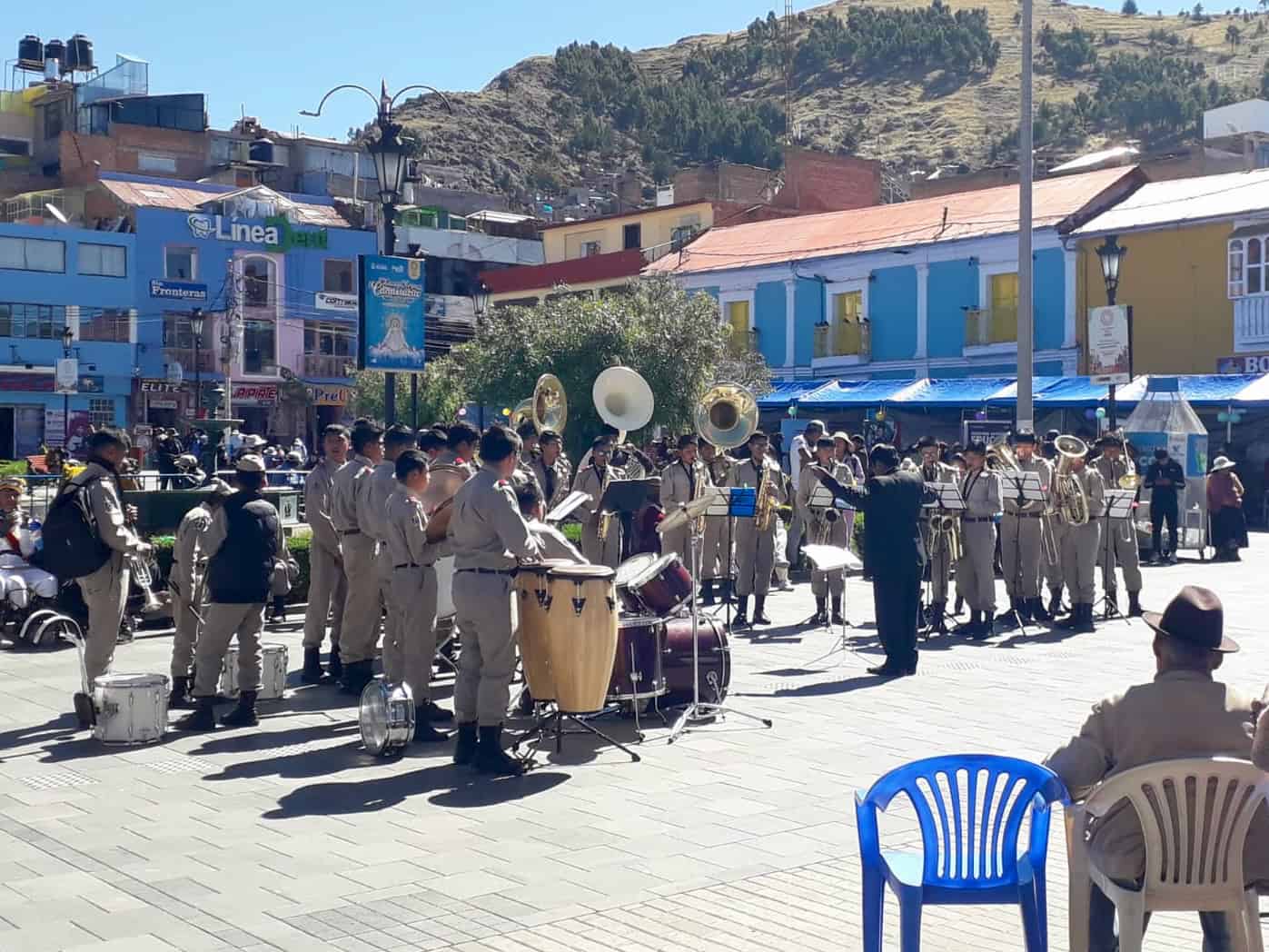
After a week in Puno, the walls are closing in on Paul. We both feel our time in Peru ticking away and the kilometers on the promising routes are shortening. The stomach ache is now ‘not too bad’ and pooping is also possible in the bushes, so we get going again. On the day of departure, Paul takes another pill on the advice of an acquaintance that is supposed to work against many types of parasites. And lo and behold… from the day of departure, the complaints almost disappear like snow in the sun. We decide to skip our ‘detour’ via Arequipa in the south and instead cycle straight towards Cusco and the ‘sacred valley’. That sacred valley in an area north of Cusco where most of the archaeological sites of the Incas are located. We promised ourselves to mainly ride ‘back roads’ in Peru and to stay away from the main roads. Apparently, the smaller roads here are mostly in good condition. A completely different story than the terrible gravel roads in Argentina.
I map out a route through a valley, over a pass of over 4800 meters high and along four lakes with the first ‘destination’ Písac, where an Inca ruin is located that beats Machu Picchu in terms of size. We don’t know what to expect of the surroundings, but we are pleasantly surprised by the beauty of the valley. At this altitude there are no trees so we look out over endless plains, valleys and hills of yellow-green grass. Not grass to lie down in, but calf-high and razor-sharp (we regularly experience). Here and there is a village and a clear river runs through the valley. We also regularly see a kind of wadis. Lakes that are created by the rain that falls here about 16 days a month in the summer. Another reason why we are in Peru now, the dry (winter) season starts here in April. The weather is perfect for our liking. During the day we cycle in short clothing without overheating due to too much heat, the nights are cold. However, the days are short. The sun rises around 6:00, but with the many mountains here it often takes a while before it is on the tent and warms things up a bit. Around 18:00 it gets dark, but (again thanks to the mountains) the sun often disappears behind the mountains quite a while earlier, which makes it cool down considerably. We often eat a hot lunch at a market or in a simple restaurant. An ‘almuerzo’ that usually consists of a well-filled clear soup (with large pieces of potato, yuka and rice or quinoa) and then a very full plate of rice, potatoes and meat and a little vegetables. I usually have enough with such a plate of filled soup. When we crawl into the tent around half past five we make sandwiches with cheese, avocado and tomato.
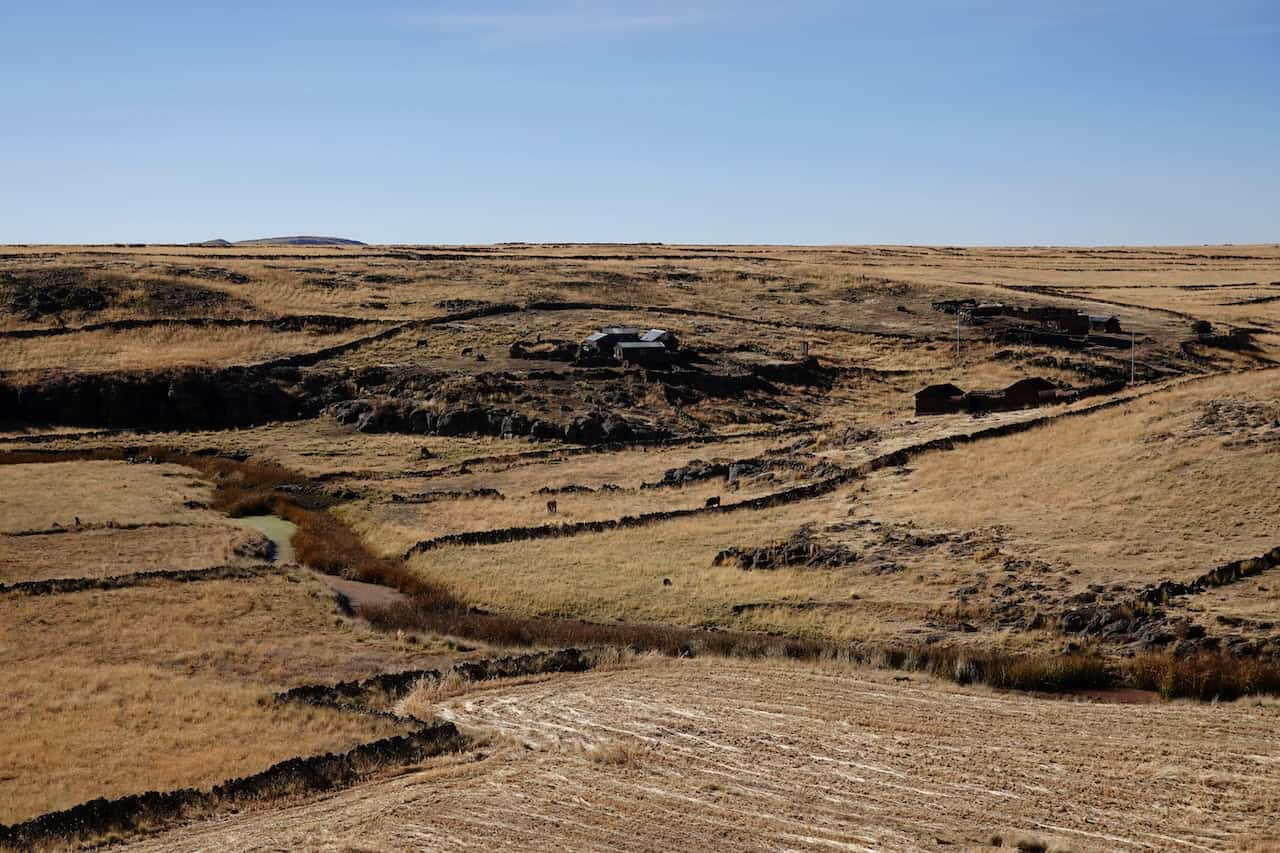
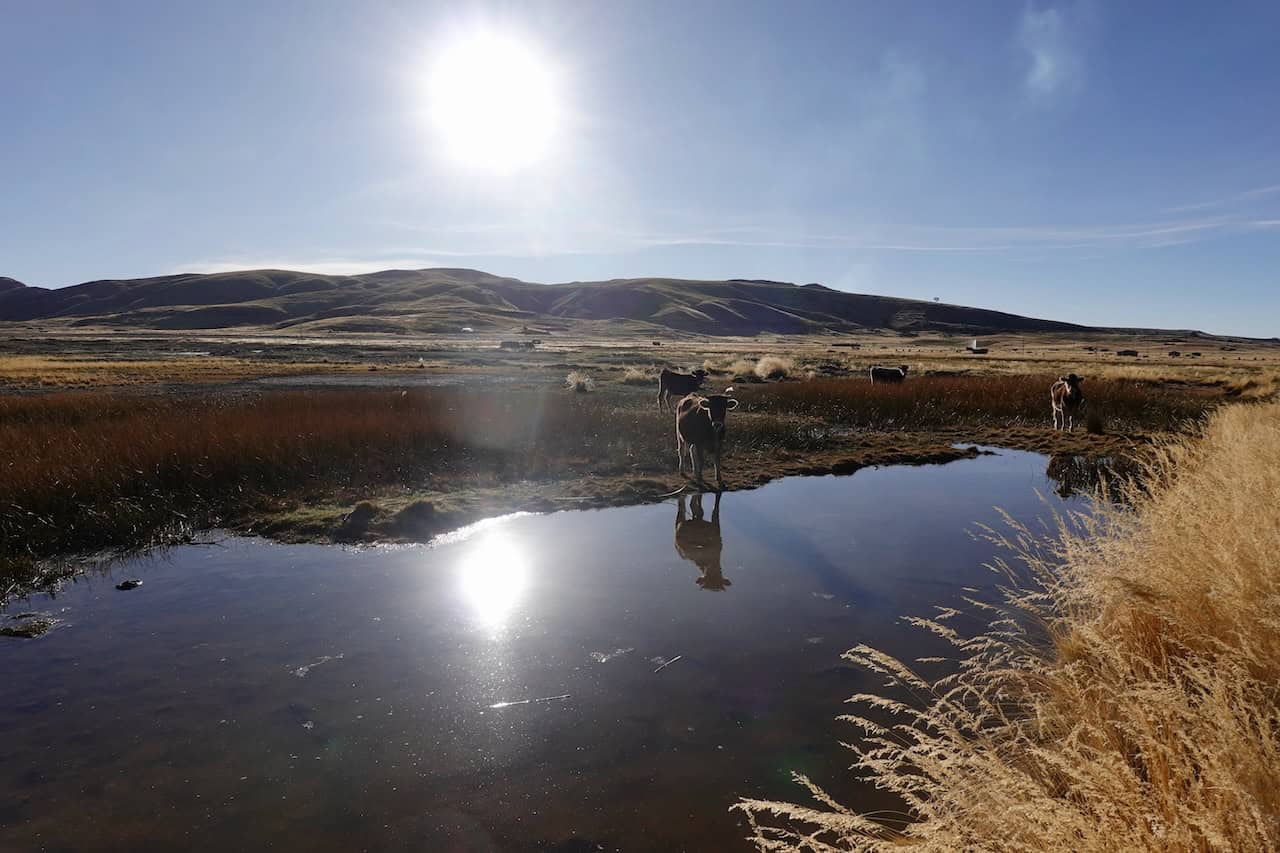
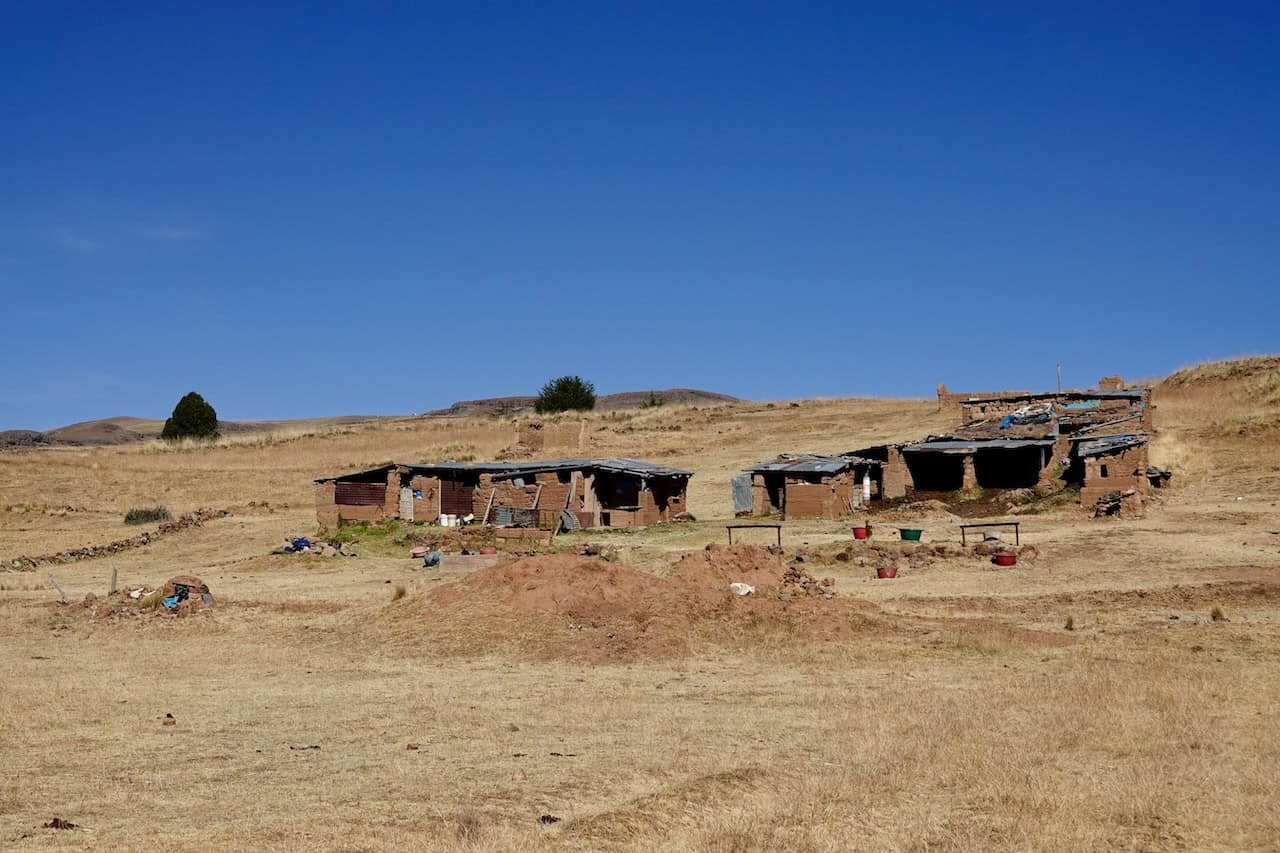



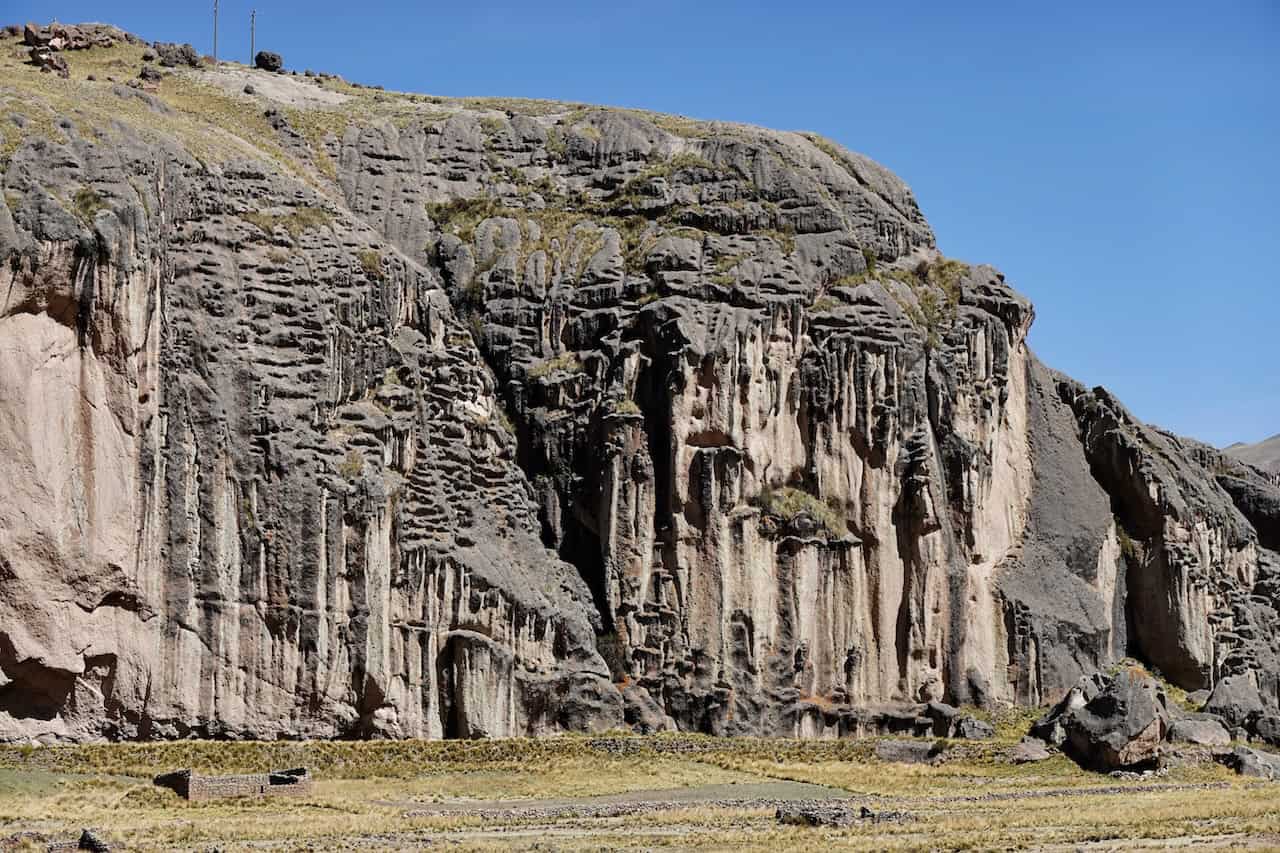
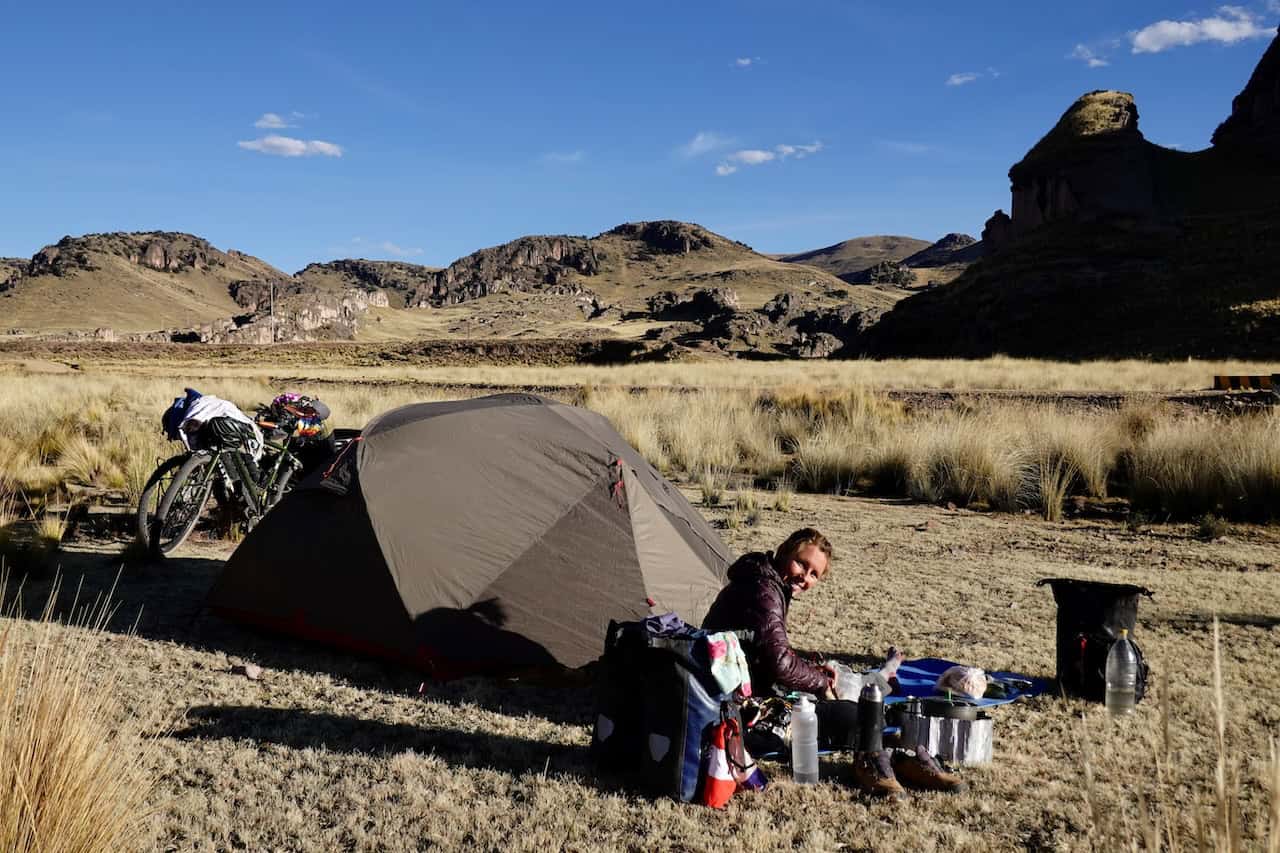
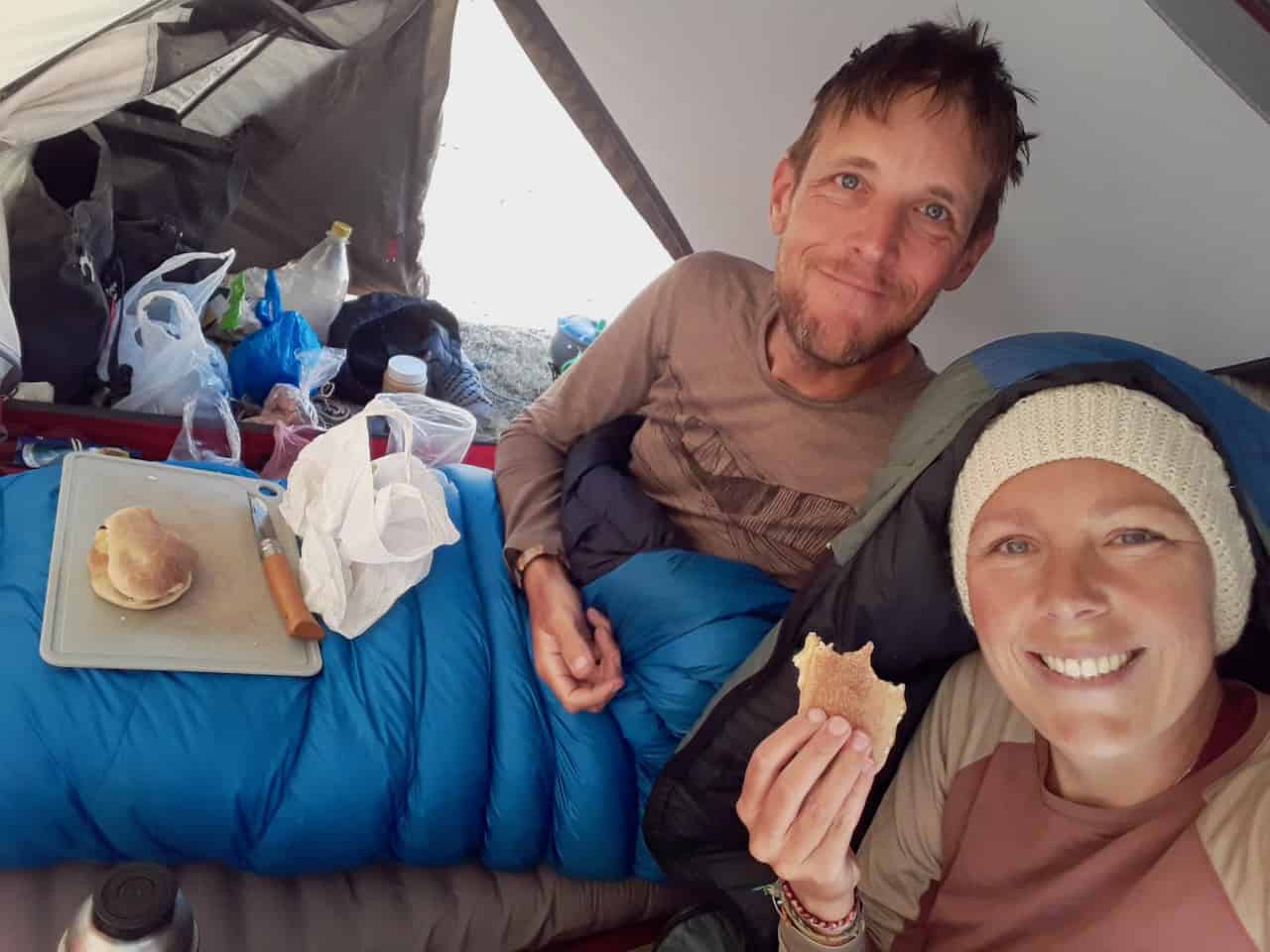
‘Peruvian nights are long’ and we entertain ourselves together in the tent with a game of Claim and a podcast (where Paul always falls asleep around 7:00 PM). Due to a lack of variety, we recently played a game of ‘I spy with my little eye and the color is…’ in the pitch dark. Only items that are present in the inner tent at night (always the same) counted. We also fantasize together about our plans after the trip. How I can find a place in the field I would like to work in (non-profit, preferably with a focus on anti-slavery/exploitation and human rights) despite the fact that I do not have the ideal diplomas for it (ALL TIPS OR CONNECTIONS ARE WELCOME!). About a house that we want to build together and the pros and cons of the many materials that can be used for that. Etc. etc… When we wake up after a (still) long night’s sleep, there is always frost on the tent canvas and ice in the bottles that are in the vestibules. Until the first rays of sunshine hit the tent, we stay warm in our sleeping bags most mornings. We enjoy it to the fullest. The warm sleeping bag, the cold mountain air, the first rays of sunshine on the tent and a little later a delicious cup of coffee (provided by Paul) and an oatmeal breakfast with fruit, nuts, seeds, raisins and cocoa or cinnamon on a mat in the sun! I have often written that the trips I make are not ‘vacations’… but every now and then it starts to feel like one under these circumstances!
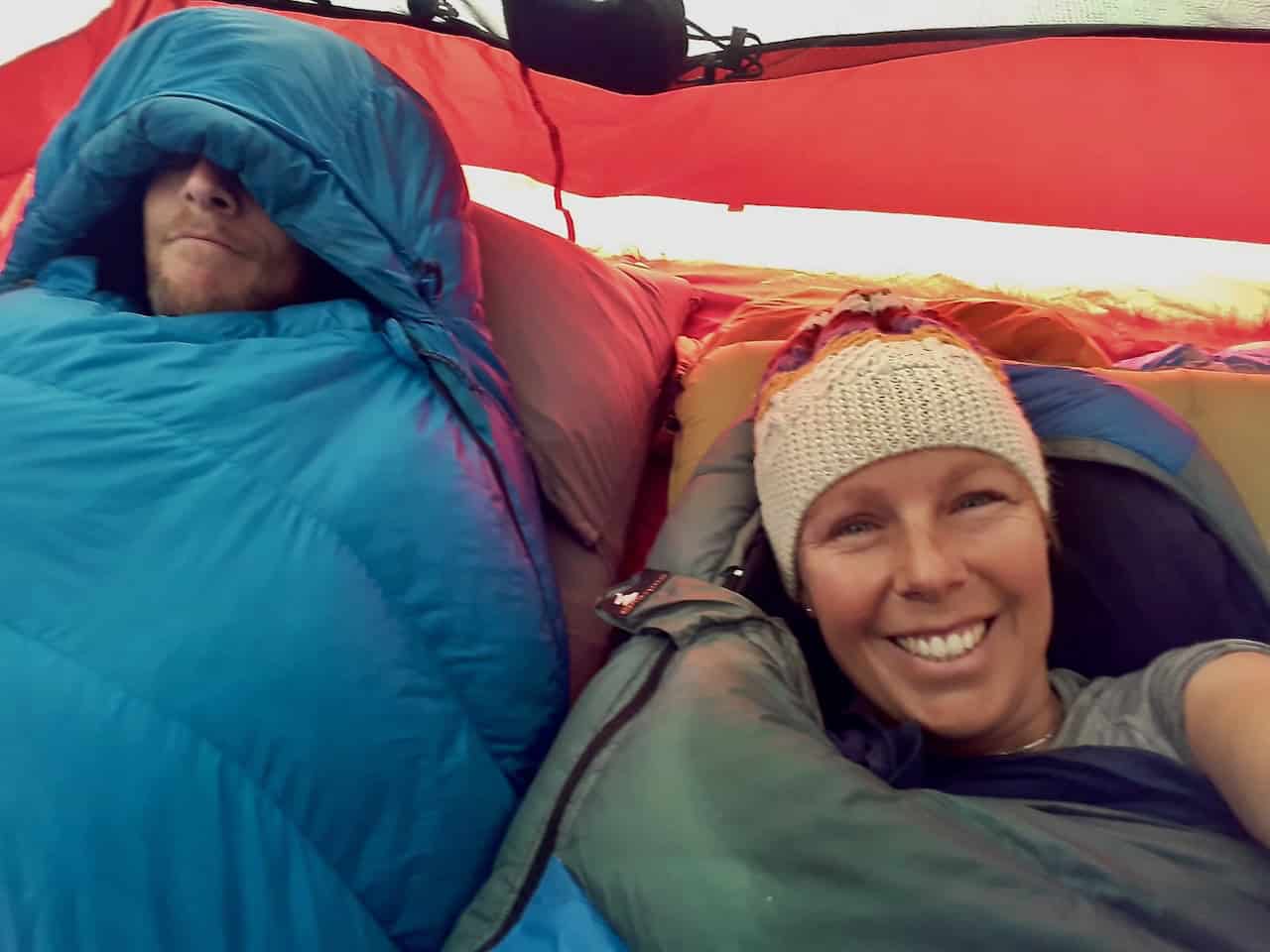
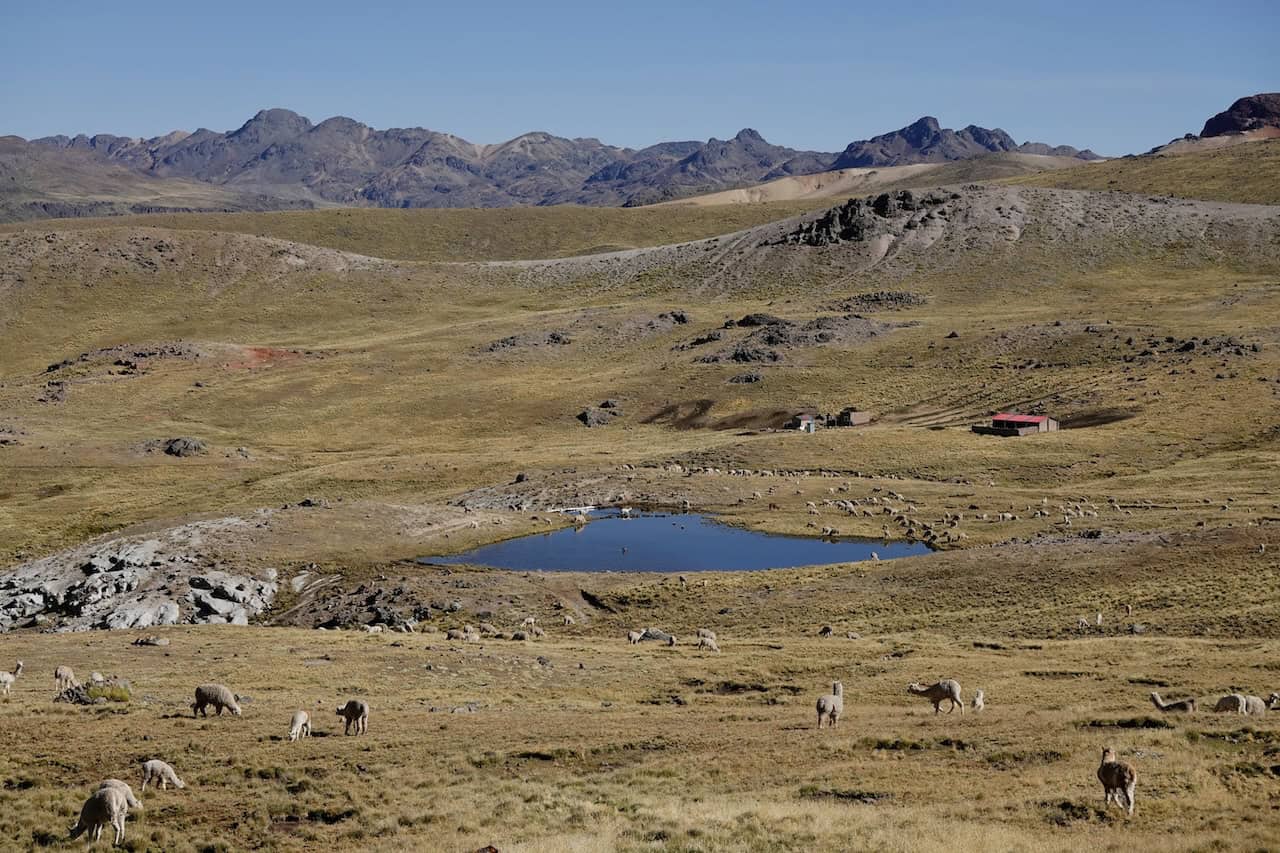
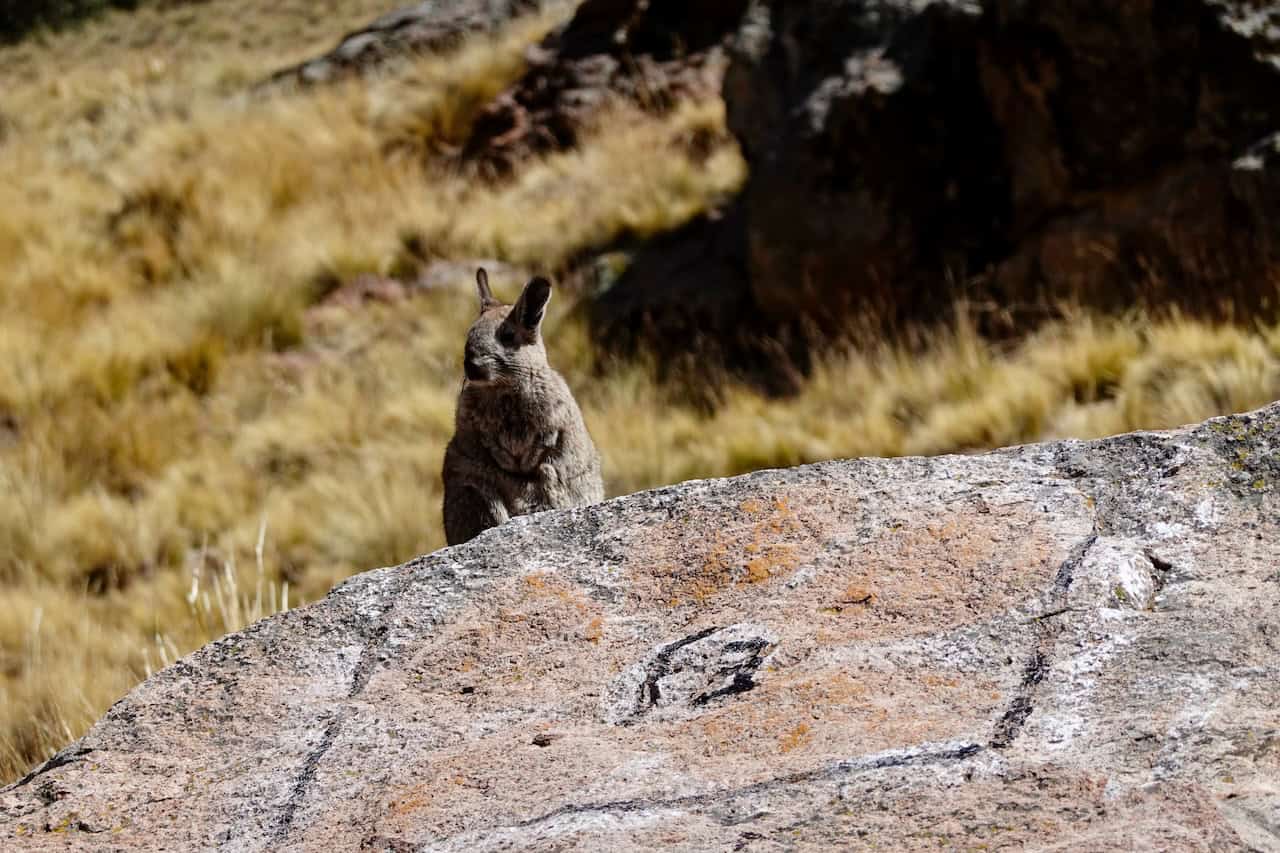
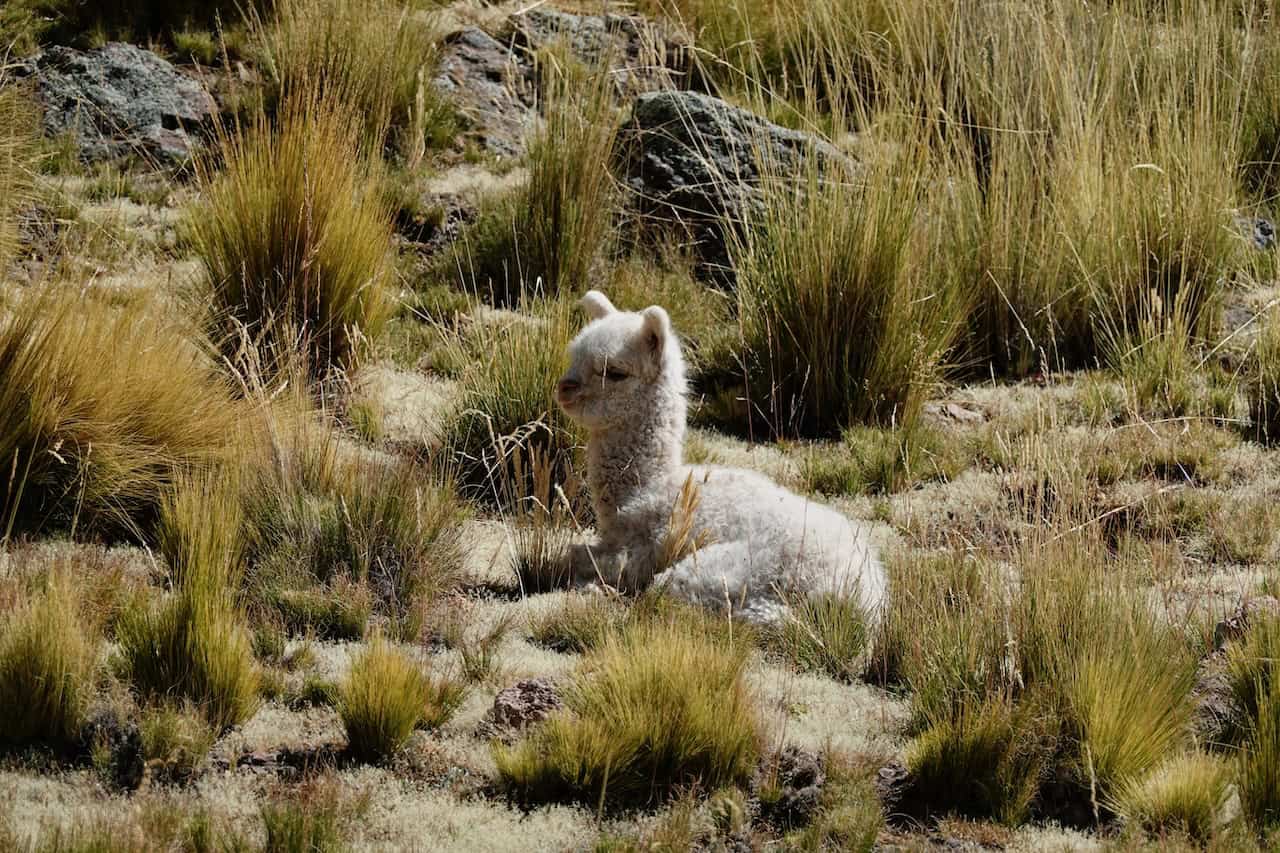
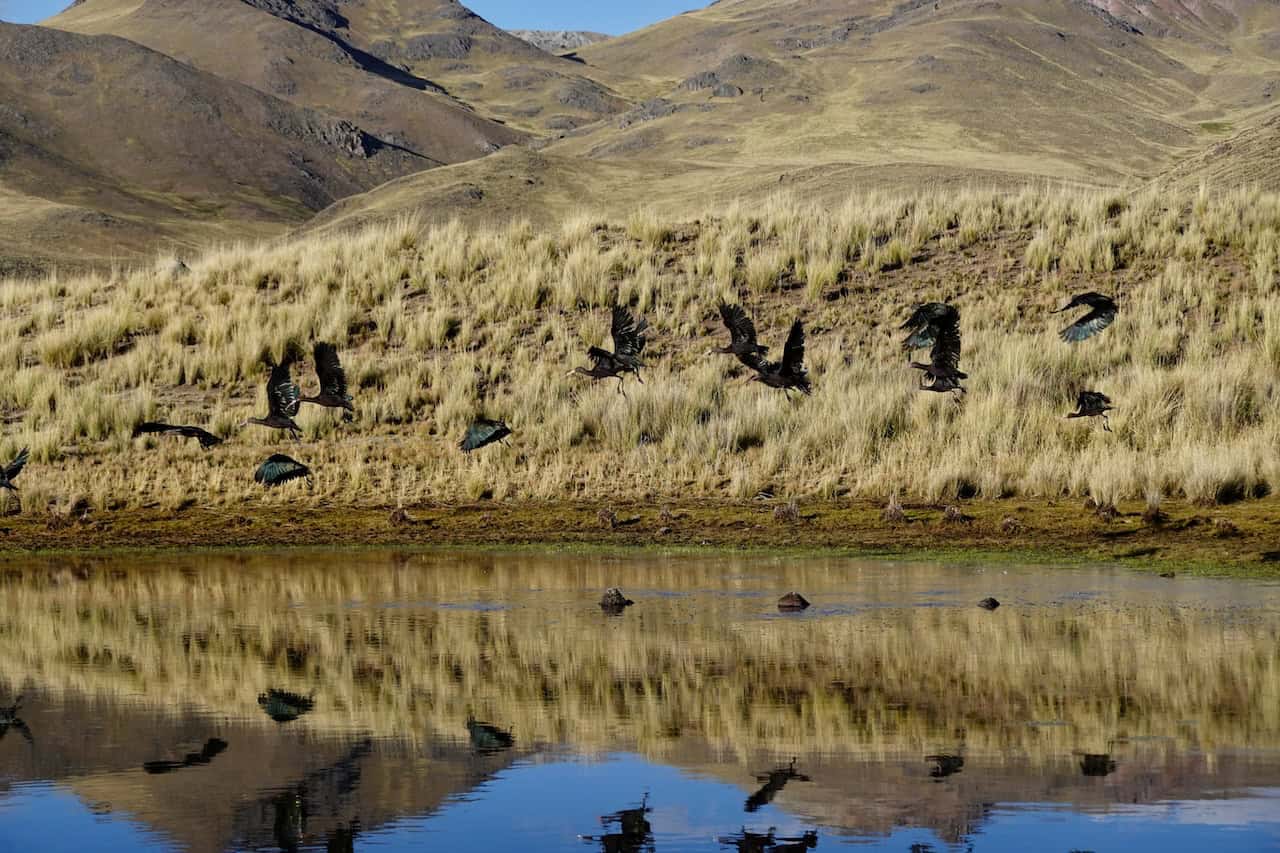
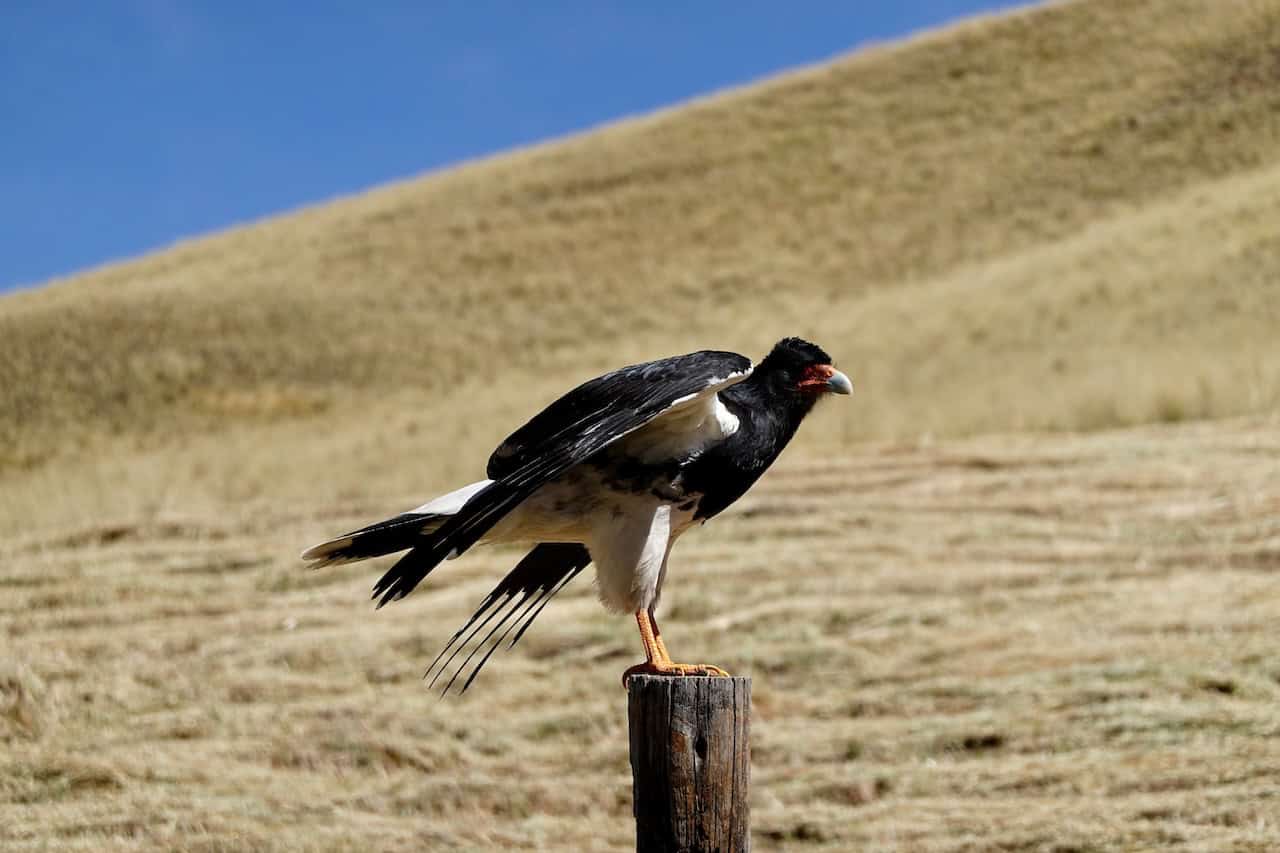
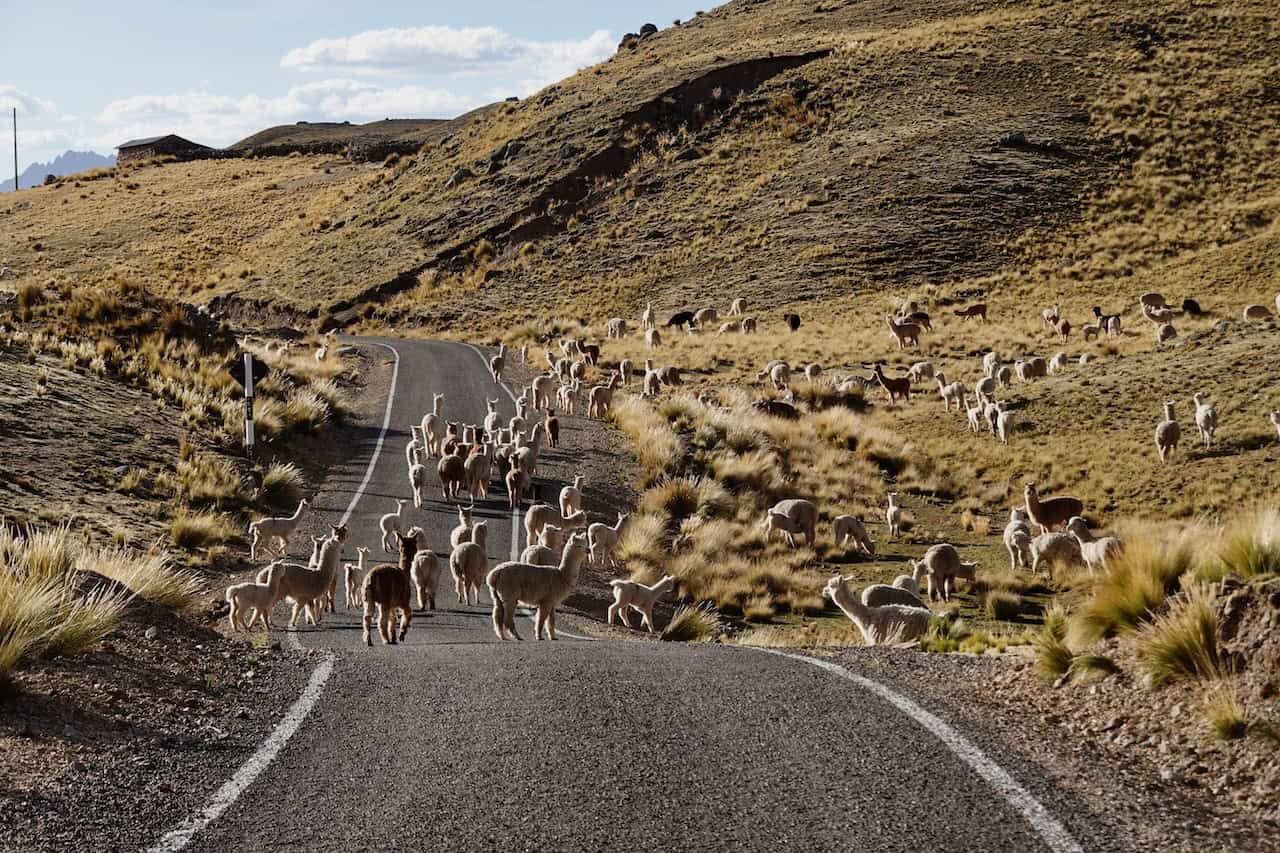
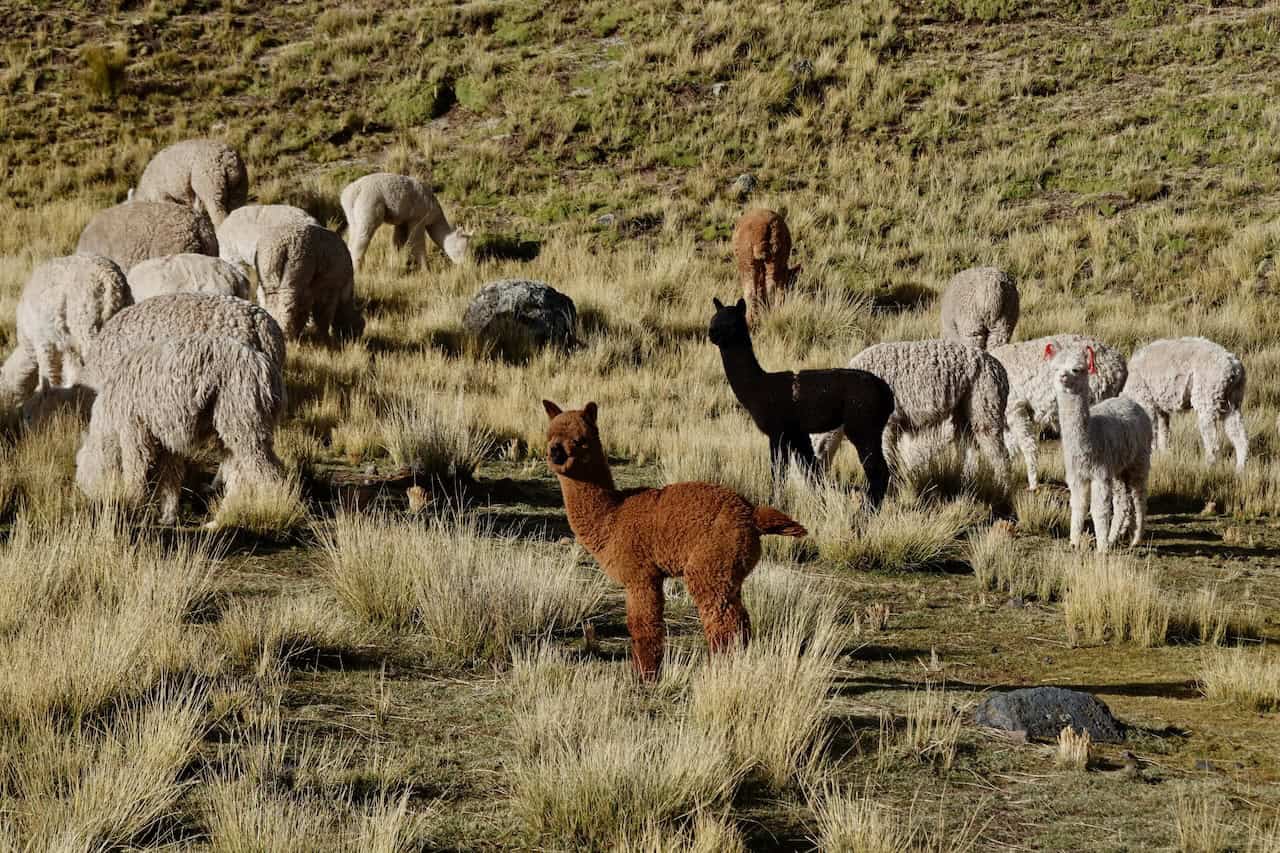
We climb through the valley to the highest pass of our journey so far. Fortunately, the road is not too steep and we can even cycle ‘in 2nd gear’ regularly instead of in the lightest gear. Once at the top, a few rare clouds appear in the sky and we put on our jackets and gloves for the descent. Sun gone = cold! When we pitch our tent on a bald spot on a spike field, a young farmer comes to check things out. Apparently it is his land. As soon as he sees that we are travellers, a smile appears on his face. No problem if we want to camp there! The next day we also camp with a farmer on his land, this time after asking. The fenced terrain promises a quiet night. We are far away from the farm on the (high) bank of the river. While we are huddled in our sleeping bags, listening to a podcast in the dark, a light suddenly becomes increasingly brighter on our tent. Then we hear the car that belongs to it stop next to our tent. Only when we unzip the tent do we see the blue flashing lights. Paul puts on his pants while I just stick my head outside. What do you know… the ‘neighbours’ on the other side of the river have reported ‘intruders’ in the neighbour’s field! As a result, there are now three police officers, the informant and a little later the farmer himself next to our tent. The police officers quickly understand the misunderstanding. Still, they would like to see our passports, our signatures on a blank notepad and especially take pictures of our camp and our bikes. Finally, we get their phone number, in case ‘something happens’. Many thanks, officers… but we really don’t expect more commotion than this.

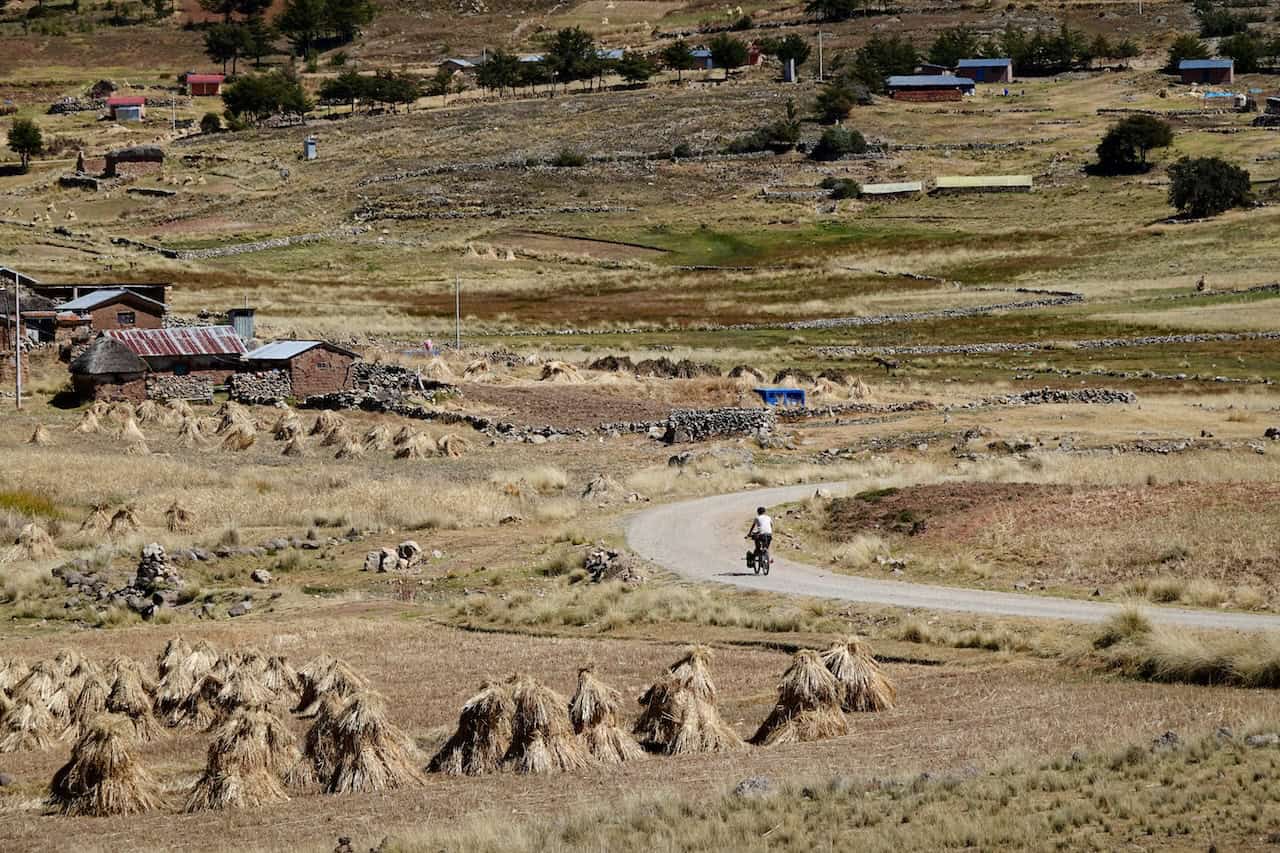
After a great week of cycling we arrive in Písac. Here begins our exploration of the Inca Empire, with the highlight (hopefully) in a week also a visit to Machu Picchu. But I will write about that in the next blog…
For now a warm greeting from Peru!
HASTA LUEGO!
Hera

